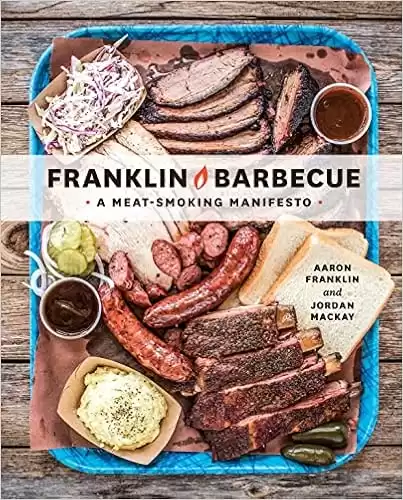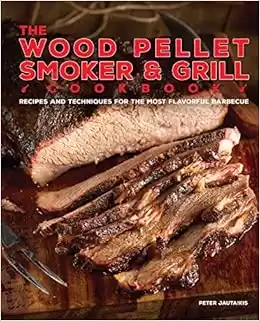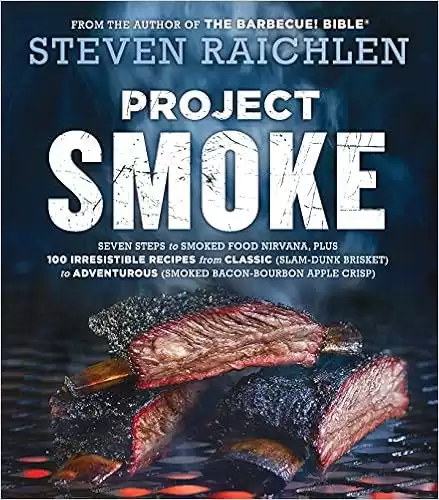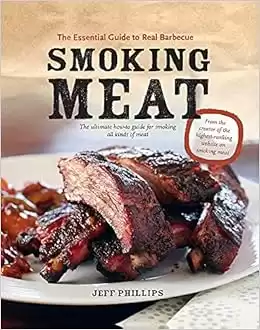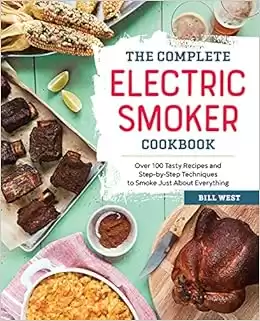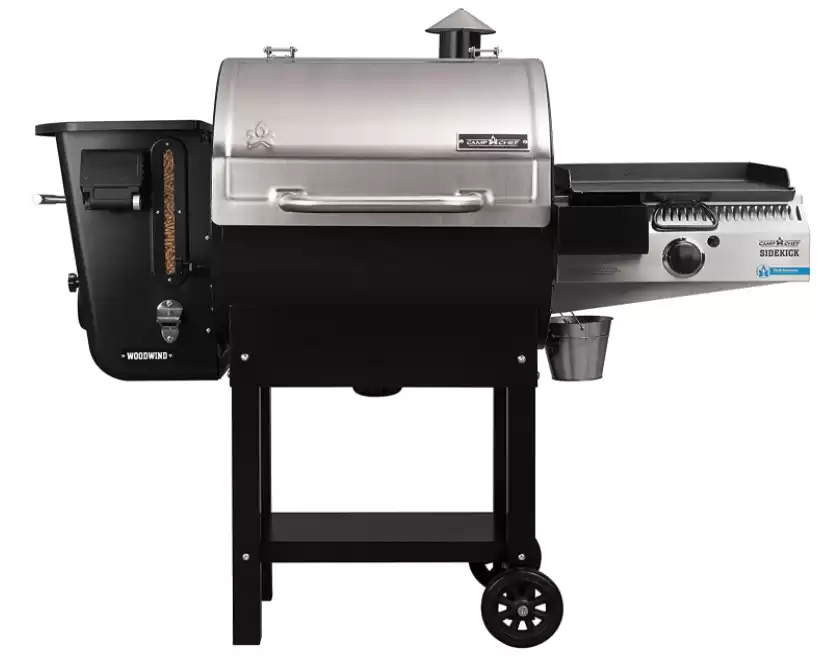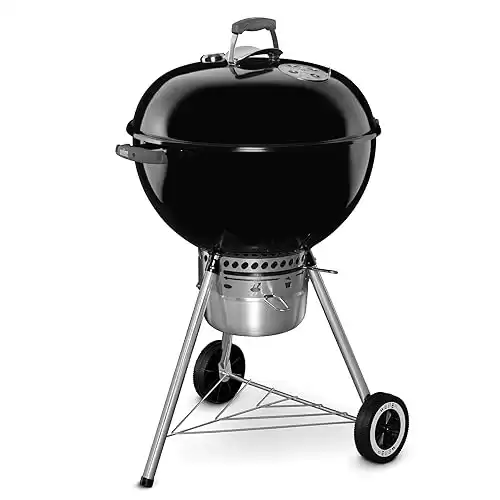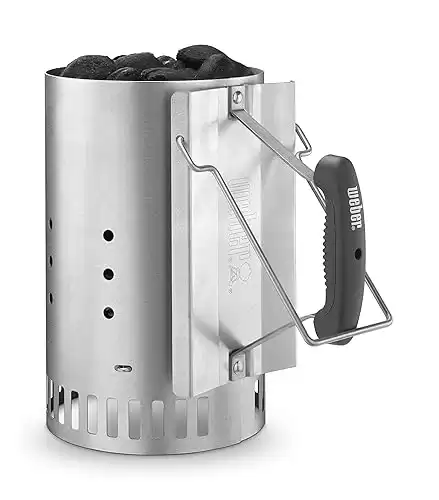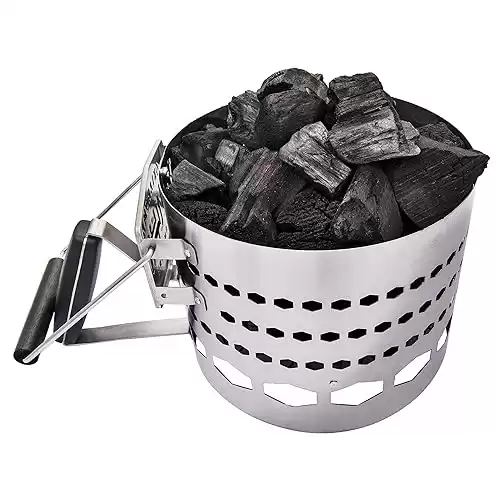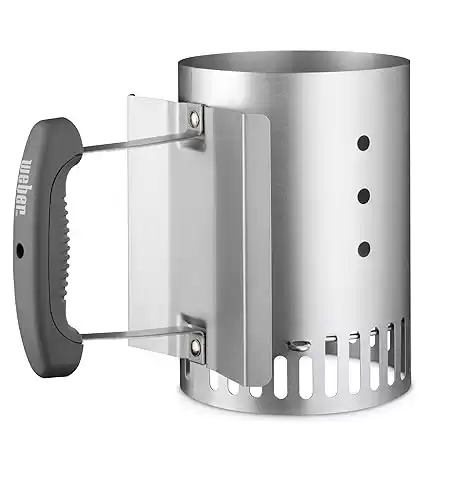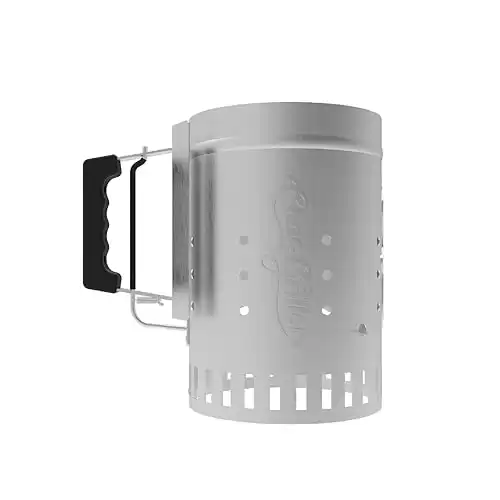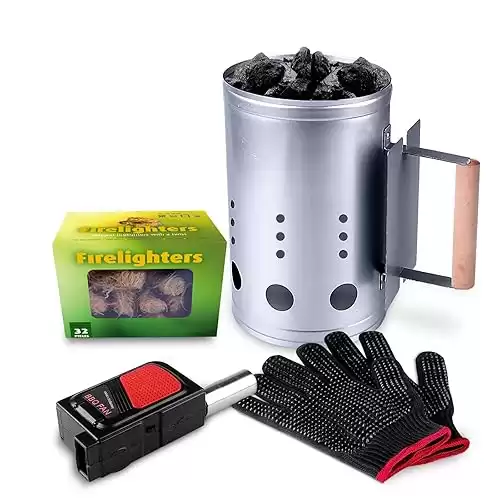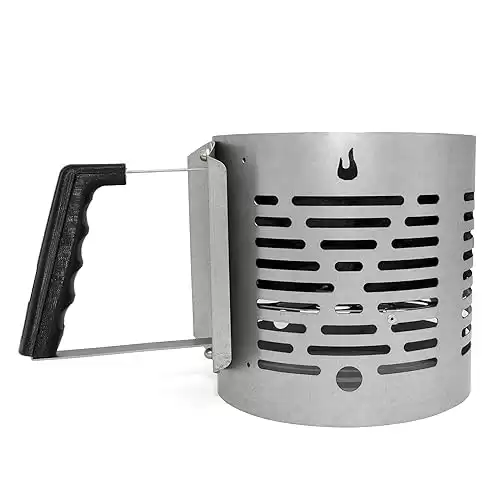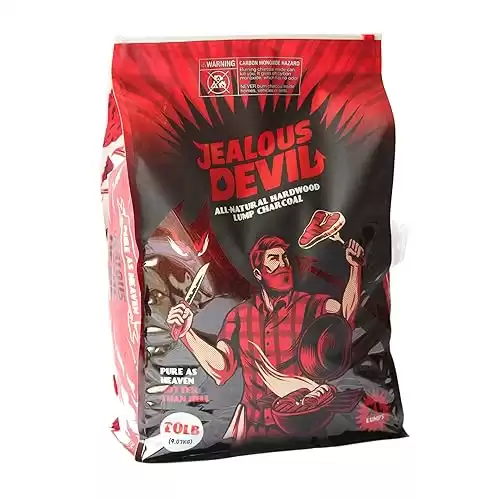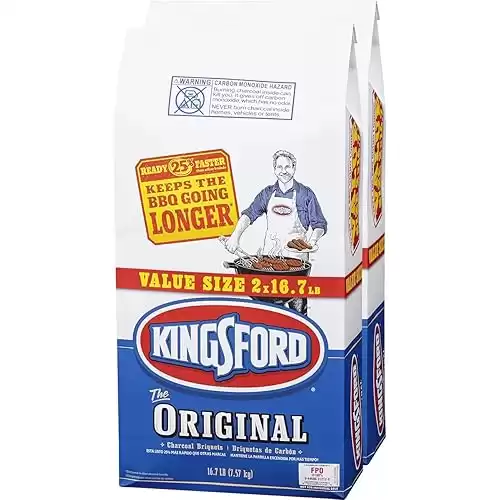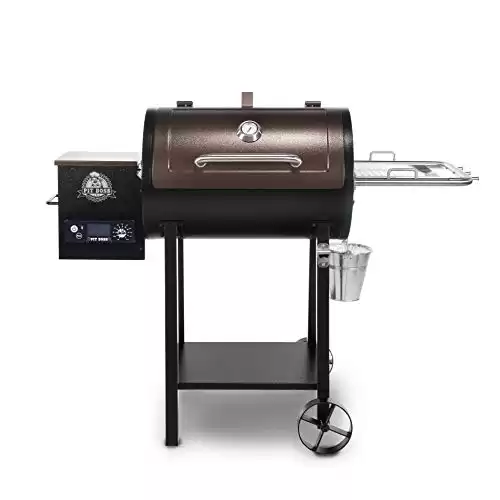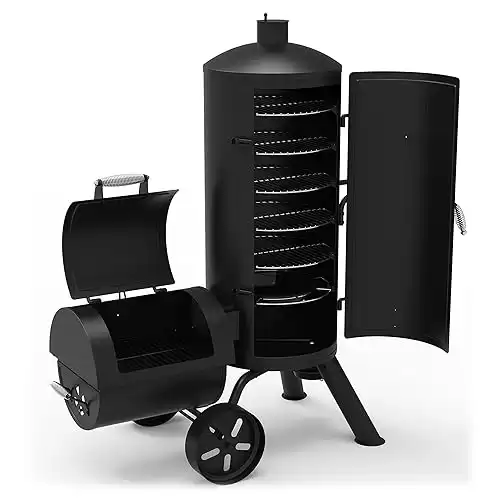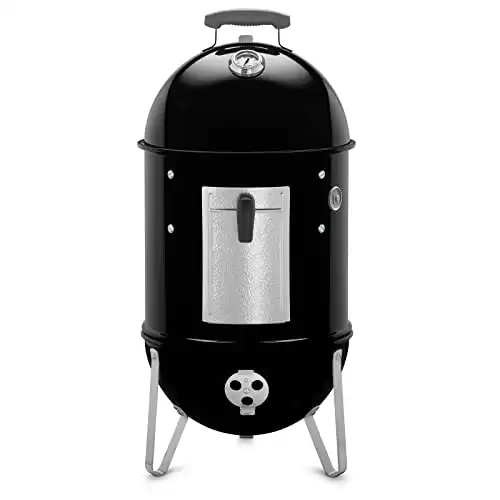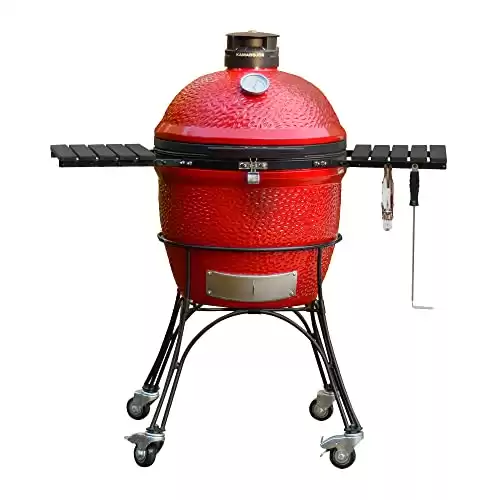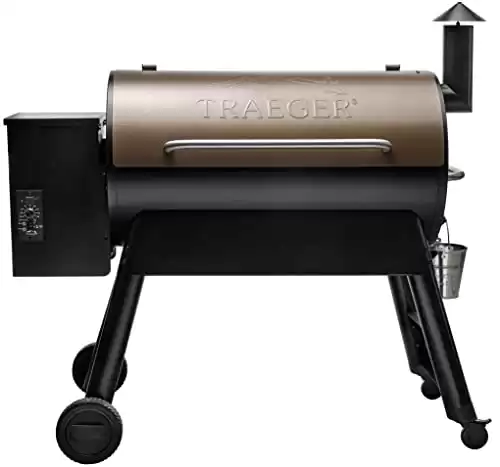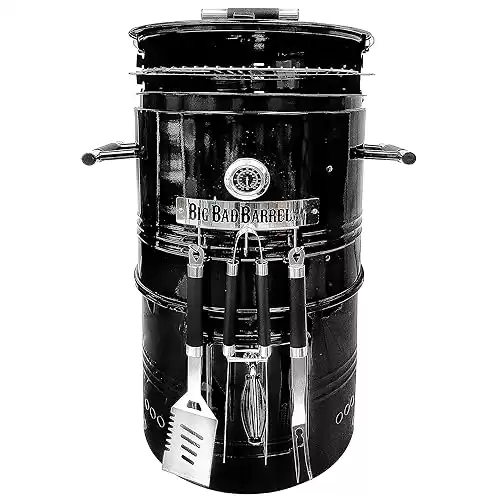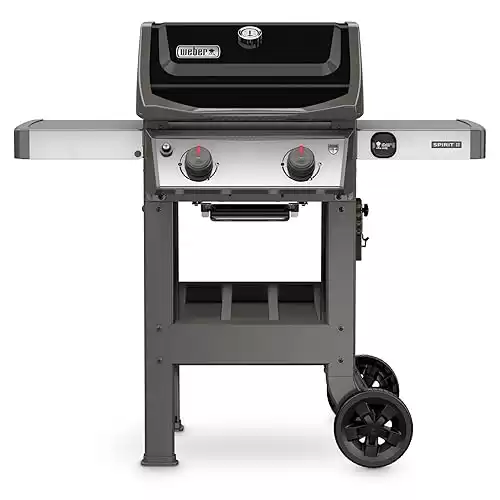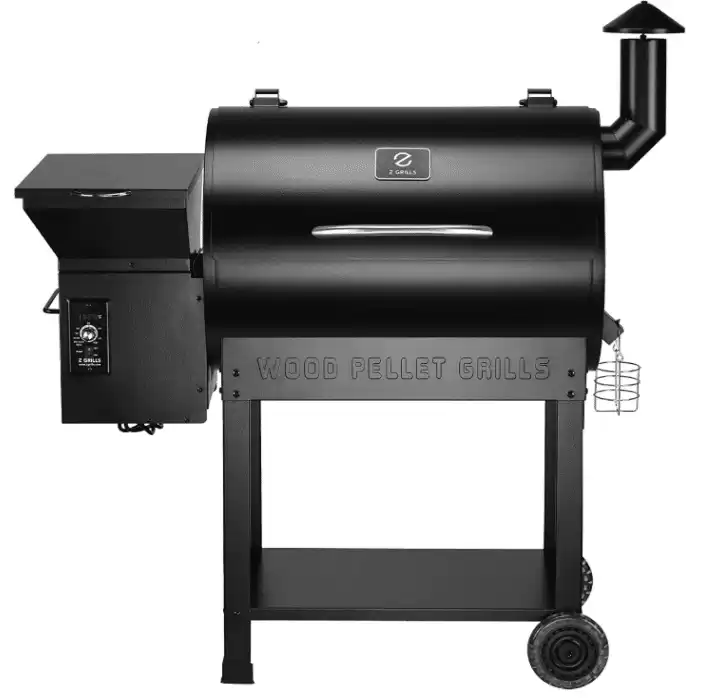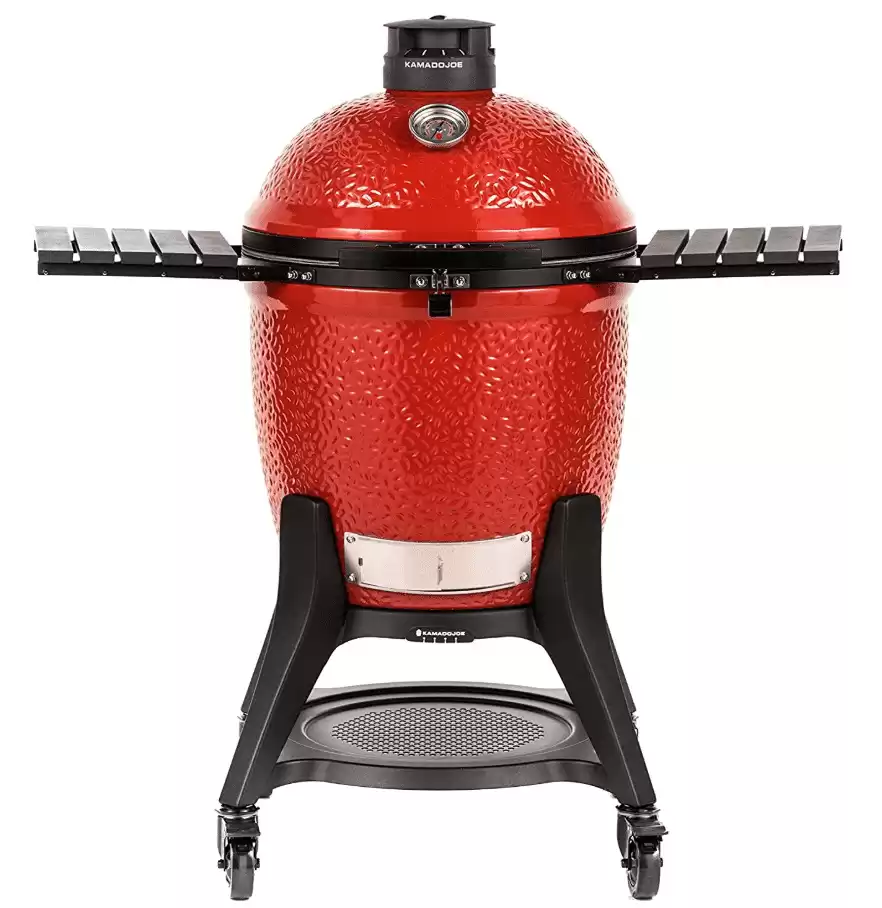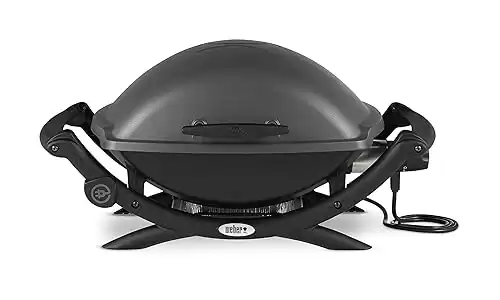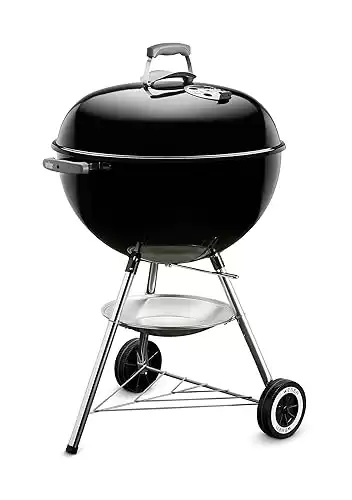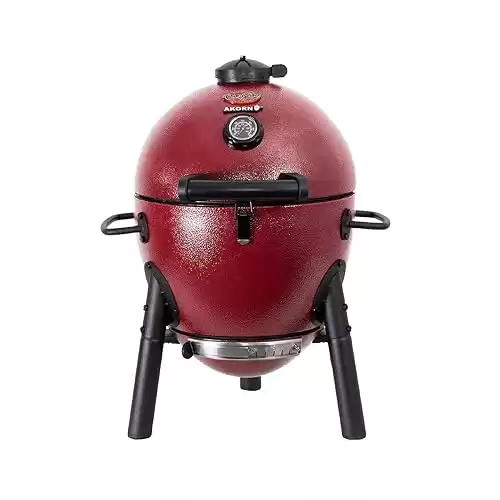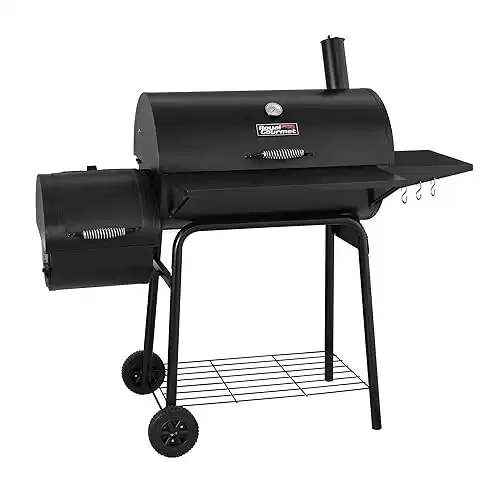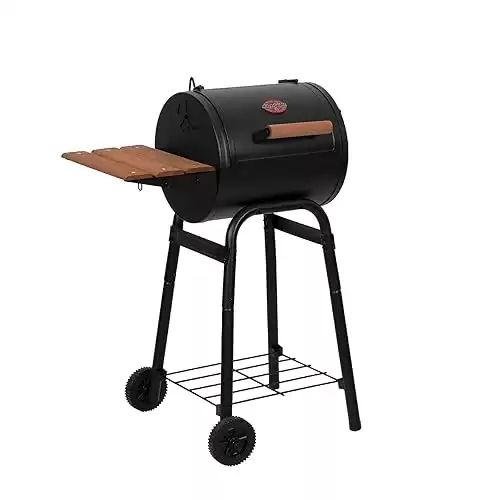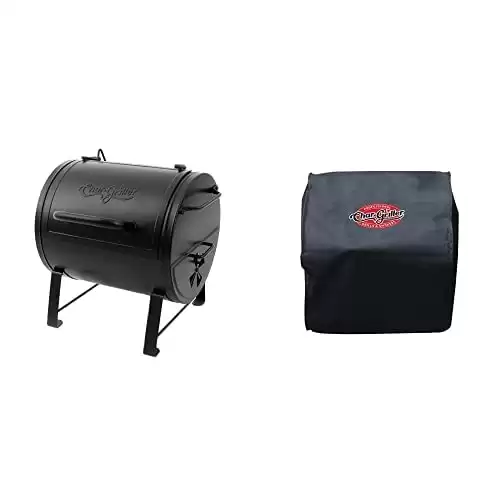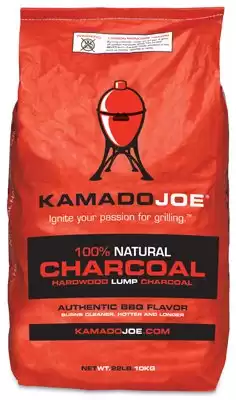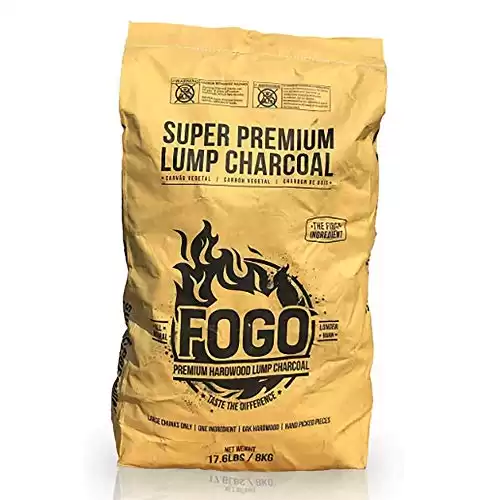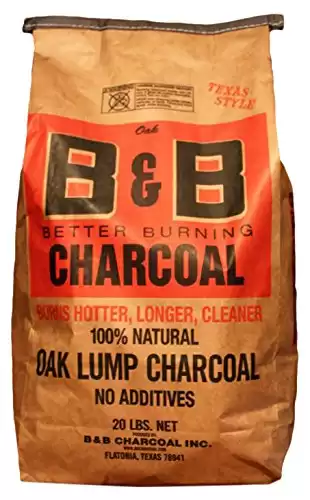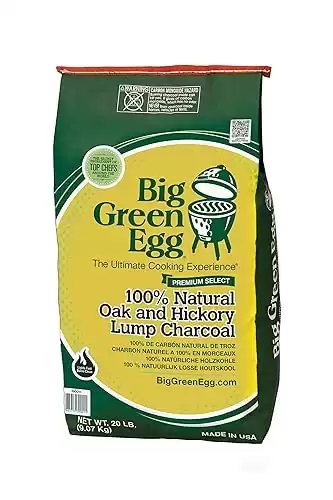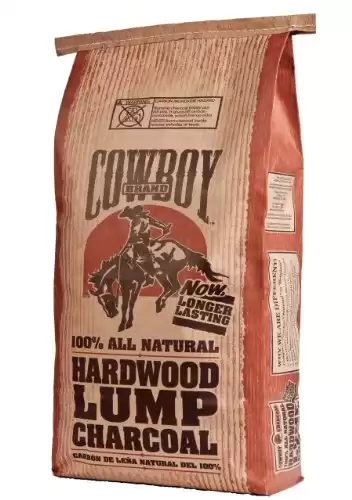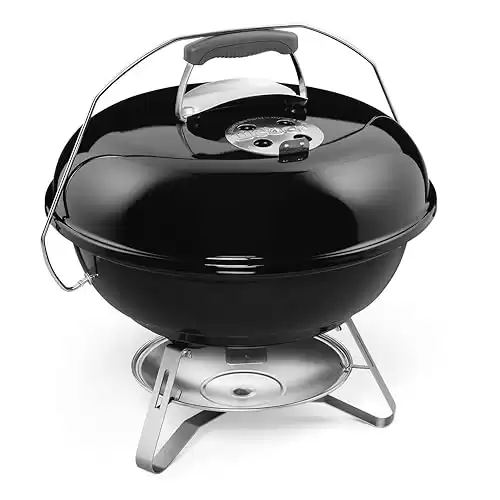The post Best Smoker Cookbooks appeared first on Own The Grill.
]]>These cookbooks really make the process friendlier. They walk you through step-by-step so you can avoid disappointment and end up with mouthwatering smoked meat. My personal favorite is (insert book) – the recipes are creative and foolproof.
I think it’s awesome that smoker cookbooks meet you wherever you’re at. Whether you are new to smoker grills or have been smoking meats for years, there’s a book that fits. They really help you get the most out of your equipment.
With the right guidance, I believe anyone can become an excellent smoker. There’s something magical about the whole process. These cookbooks capture that – they’re almost like a trusted advisor you get to take right to your backyard. I’d encourage any aspiring smoker to grab one – it makes the journey to smoked meat mastery that much more fun!
Best Smoker Cookbooks
A Meat-Smoking Manifesto
Author: Aeron Franklin
Formats Available: hardcover, kindle
If you want a cookbook that teaches you the ins and outs of smoking meat, then you need to purchase a copy of Aeron Franklin’s best-selling manifesto.
This beautiful book was first published in 2015 and features a detailed history of the author’s experience with smoking. It also includes full-color photographs and a collection of gourmet recipes, complete with detailed instructions.
It’s clear that Aeron Franklin is a man who knows his barbecue, as this book covers all you need to know about the process – from wood chips and meat cuts to curing and how to build the perfect fire.
The manifesto currently has over 1700 ratings on Amazon and continues to receive rave reviews from readers around the world.
Pros
- The manifesto has been written by a professional smoker with a successful career in the barbecue world.
- The instructions are easy to follow and come with additional information about how to smoke various meats.
The manifesto features beautiful pictures and full-color plates, which compliment the text and detailed recipes.
Cons
- The number of recipes is rather small when compared to other smoker cookbooks available online.
The Wood Pellet Smoker And Grill Cookbook
Author: Peter Jautaikis
Formats Available: hardcover, kindle, audiobook
This smoker’s manual was first published in 2016 and covers everything from cooking meat to wood pellets.
In contrast to the other entries on our list, this book was not written by a professional chef and was instead composed of a passionate smoker with decades of experience.
In fact, Jautaikis is one of the most relatable authors we’ve encountered, as his book contains hilarious facts about his life and hobbies.
The publication places a lot of emphasis on the importance of wood pellets and how this can impact the taste of the meat. It also contains a spectrum of recipes, from barbecued brisket to wood-smoked trout.
The cookbook is available in various formats and can be purchased as a hardcover or kindle reader.
Pros
- The manual contains detailed diagrams and color pictures, which are accompanied by simple instructions.
- The recipes are easy to understand and feature clear steps that can be followed to ensure delicious meat.
- The manual also includes practical information on how to operate a smoker and the materials you will need.
Cons
- The author is not a professional smoker and instead uses his personal experience to outline the process.
Project Smoke
Author: Steve Raichlen
Formats Available: paperback, hardcover, kindle
If you want to perfect your smoking skills, then we recommend purchasing a copy of Steve Raichlen’s best-selling book, which features some of the most innovative recipes we have ever seen.
This stunning book was first published in 2016 and contains over 100 recipes from smoked mushrooms to a delicious vanilla rib glaze.
It also includes practical information on how to improve your craft, as well as how to use wood pellets and find the best machine for your purposes.
The book is the work of a successful journalist and contains decades of research and smoking experience.
Nowadays, the book can be purchased as a paperback or hardcover. It is also available as an e-reader for kindles and other devices.
Pros
- The cookbook contains a wealth of information, which covers everything from wood pellets to smoker upkeep.
- The creative recipes are easy to follow and feature simple instructions accompanied by diagrams and pictures.
- The cookbook is available in several formats, which include paperback, hardcover, and electronic options.
Cons
- Some customers have complained that the Kindle version is hard to navigate, which can make it difficult to follow the recipes.
Smoking Meat: The Essential Guide To Real Barbecue
Author: Jeff Phillips
Formats Available: paperback
If you are new to the world of smoking and want to produce delicious meat, then look no further than this incredible handbook.
Perfect for beginners, this cookbook walks you through the process of smoking meat and features simple instructions to ensure the best results.
Among the various recipes, you will find classic dishes such as chicken and ribs. However, the book also offers more unique options in the form of smoked duck and rich chocolate cake.
Written by Jeff Phillips, the handbook is packed with information and features the author’s own tips on how to get started.
The only drawback is that this book is only available in paperback, which can make it less accessible to kindle readers. It is also important to note that the book’s structure is not ideal and could be damaged while you cook.
Pros
- The handbook contains practical information, which covers the best wood pellets and how to set up your smoker.
- The book features a wide range of recipes, which range from chicken and ribs to smoked duck and fish.
- The handbook includes a large selection of products, which can be purchased for future use.
Cons
- As previously mentioned, this book is only available in paperback and has been described as delicate.
The Complete Electric Smoker Cookbook
Author: Bill West
Formats Available: hardcover, kindle, audiobook
We all know there are countless ways to smoke meat. So if you own an electric smoker, then we recommend purchasing a copy of this useful cookbook.
Like the other options on our list, this book contains over 100 recipes and can be used to make a range of dishes from smoked shrimp to tender pork loin.
The book also works as a beginner’s guide, covering everything you need to know about the smoking process and how to perfect it.
When you have mastered the basics, the book also includes advanced chapters, which will teach you about rubs, marinades, and injections.
Everything in this book can be made in an electric smoker, although some recipes are also suitable for traditional containers. The cookbook is available in several formats and can be purchased online.
Pros
- The guidebook is available in several formats and can be purchased online as a hardcover or e-reader.
- Because of its simple instructions, the book is suitable for beginners and includes chapters for advanced smokers.
- The guidebook has been specially written for electric smokers and features countless recipes and tips.
Cons
- Despite its wealth of information, advanced smokers may find the recipes basic when compared to complex alternatives.
Now that we have covered some of the best cookbooks available, let’s take a closer look at what makes the best smoker cookbook.
Buyer’s Guide
The idea of purchasing a cookbook may sound like a simple task. After all, every cookbook contains delicious recipes and useful tips.
However, there are certain elements that should be taken into consideration before purchasing a smoker cookbook. Elements that help to ensure that the book meets your expectations and needs.
In the section below, we have outlined some key points that should be kept in mind when it comes to purchasing a smoker cookbook.
By consulting these points, you will be able to select the best cookbook for you, saving you time and money.
Recipes
When it comes to purchasing a smoker cookbook, the first thing you need to consider is the recipes included.
While the additional information can be useful, it’s the recipes themselves that will determine your final decision. It’s important to remember that you are purchasing a cookbook and not a manufacturer’s guide.
Of course, no two cookbooks are the same, which means there are many possible recipes to choose from. However, it’s important to find recipes that you can understand and follow, as this will ensure the best results.
Some cookbooks will only include a small selection of basic recipes, so it’s best to purchase a book that contains a range of recipes from simple dishes to more complex creations.
This way, you can build your culinary experience and challenge yourself once you have learned the basics.
In addition to recipes, a good smoker cookbook will also include cooking techniques and additional information. This can be anything from how to clean your smoker to the best wood pellets for certain meats.
While recipes can help to produce delicious food, this additional information will make sure that your smoker is prepared.
Author
Cookbooks are often written by authors who have spent years perfecting their craft.
The author has undoubtedly put a lot of thought into each recipe and the accompanying text. If an author does not provide enough detail or fails to explain something clearly, then it could lead to problems down the line.
To avoid any confusion, it’s always best to buy a book with an established reputation.
For example, we included A Meat-Smoking Manifesto by Aeron Franklin on our list, who began his culinary career selling smoked meat by the side of the road.
Since then, Franklin has gone on to win numerous competitions and has poured his experience into his book.
In most cases, the experiences of the author will translate into their work.
For example, if an experienced chef writes a book about smoking, they will likely know what works and what doesn’t. In contrast, a novice might struggle to get the hang of things and end up making mistakes.
This is why it’s worth spending extra time researching the author, as well as reading reviews online. You can learn a lot about the quality of the book by looking at other people’s opinions and experiences.
Number Of Pages
The number of pages in a cookbook is another factor that needs to be considered before buying one.
As mentioned above, a good smoker cookbook will contain a wide variety of recipes, so it’s essential that the book isn’t too short.
Ideally, the book should contain between 100 and 300 pages, but this varies depending on the size of the book and the type of recipes included.
If the book is too long, it may become difficult to read through all the content. Conversely, a book that is too short will lack depth and won’t give you much guidance when preparing meals.
It’s also important to note that some books will feature large images and detailed instructions.
These types of books tend to be very useful for beginners, however, they can also be expensive. It’s better to look for a cheaper alternative that provides similar information.
Price
Of course, the price of a cookbook is going to vary greatly depending on its contents. However, there are some factors that influence the cost of the book.
First, the more pages a book contains, the higher the price. This is because the publisher must pay for printing costs and the author has to cover their own expenses.
Second, the quality of the paper used also affects the price. Some books use high-quality paper, while others opt for lower grade paper.
Finally, the design of the book can affect the overall cost. For example, a glossy hardback book will be more expensive than a plain paperback.
Format
When choosing your cookbook, it’s important to consider which format you prefer. There are three main options: Paperback, Hardcover, and Kindle. Each option offers different benefits, so it’s worth considering them carefully.
Paperbacks are generally inexpensive and easy to carry around. They are also great for cooking at home since they don’t require electricity. However, they aren’t always suitable for outdoor activities like camping and hiking.
They also come with the drawback of being prone to damage from moisture and humidity. The covers can easily split or fall apart, and the pages can yellow over time.
Hardcovers offer greater protection against these problems. They are also easier to keep clean and dry compared to paperbacks.
Hardcovers can also look attractive in your kitchen, as they often have beautiful designs and colors. However, they are usually quite heavy and bulky. If you want something portable, then a paperback is probably best.
Kindles are small electronic devices that allow users to download eBooks directly onto their devices. They are extremely convenient, as they make reading simple and quick.
They are also lightweight and compact, making them ideal for travel. However, they are not designed for cooking, so if you plan to use your Kindle for this purpose, you’ll need to buy a separate device.
Weighing Your Options
There are many things to take into consideration when deciding what kind of cookbook you want. In addition to the features discussed above, it’s also important that you choose a cookbook that suits your lifestyle.
For example, if you spend most of your time indoors, then a paperback might work well for you. On the other hand, if you enjoy spending time outdoors, then a Kindle would be a good choice.
In general, we recommend that you go with whichever format works best for you. You may find that one type of cookbook is perfect for your needs, but another type is better suited to someone else.
Frequently Asked Questions
Which Smoker Cookbook Is The Best?
The answer to this question depends entirely on your personal preferences and requirements. It’s impossible to say which cookbook is “the best” without knowing exactly what you’re looking for.
If you’re a beginner, we would recommend Jeff Phillips’s Smoking Meat: The Essential Guide To Real Barbecue, as this book contains simple instructions and easy-to-follow recipes.
However, if you are looking for something more advanced, then Steven Raichlen’s Project Smoke is a great choice, as the book contains creative recipes that push the boundaries of smoking cuisine.
Of course, the final decision is yours to make and will depend on what you want out of your cookbook.
What Kind Of Recipes Do I Need For A Good Smoker Cookbook?
It’s true that there are some basic recipes that every smoker cookbook should contain. These include meat, poultry, fish, vegetables, sauces, and spices.
However, the recipes themselves shouldn’t be the only thing you consider when choosing a cookbook.
You also need to think about how much information each recipe provides.
Some books provide detailed step-by-step instructions, while others simply list ingredients and leave the rest up to you. This isn’t necessarily a bad thing, as long as the book has enough information to get you started.
Should I Purchase A Book With Pictures?
Yes! We highly recommend that you purchase a cookbook with pictures, as this makes following the recipes even simpler.
Most cookbooks come with photos of the finished product, but sometimes these aren’t very clear or don’t show all of the steps required for preparing the dish.
If you can see exactly what you’ll need in order to prepare the food, then you won’t have any problems following the directions.
The post Best Smoker Cookbooks appeared first on Own The Grill.
]]>The post Pellet Grill vs Charcoal Grill – Which Is Better? appeared first on Own The Grill.
]]>When in doubt, it’s best to get an impartial opinion and look at the pros and cons of different options, so that you can establish which is going to suit your needs the most. That’s where we come in.
We know how confusing it can be when thinking about investing in a new grill, and it’s not the sort of thing you can afford to get wrong either because there is such a range in prices for outdoor grills.
With a view to being useful, we’ve put together this impartial guide about the benefits and the drawbacks of both charcoal grills and pellet grills.
While neither might be a clear winner over the other, they both grill types have their own pros and cons as you will see.
What Is A Wood Pellet Grill?
Pellet grills (or pellet smokers) are a kind of outdoor cooker that are fueled by hardwood pellets. The pellets are made from super tiny food-safe fine hardwood chips and fibers which are compacted together into pellet shapes.
Pellet grills work by burning these pellets as fuel, they burn slowly and emit a woody smoke that can flavor the food inside.
You can get different varieties of wood pellets depending on your personal taste such as oak, hickory, maple, and fruit tree wood. These produce smokes that have slightly different scents and flavors which are pleasant to taste and smell.
Unlike gas grills, you can’t necessarily control the temperature of the grill by turning a button. In this way, they are similar to charcoal grills in that their cooking temperature is determined by how much fuel you are using.
However, most pellet grills have an option for using air regulation to keep a consistent pre-selected temperature throughout, which dramatically reduces the amount of time the grill master has to spend attending to it.
Wood pellet grills are often considered to be cleaner than other types of grills because wood is sustainable. But, the main reason why wood pellet grill lovers are so enamored by them, is for the amount of signature smoky flavor they give combined with how easy they are to use.
How Does A Pellet Grill Work?
The first thing you should know about pellet grills is that they work differently than traditional charcoal grills.
Instead of having a chimney that burns the charcoal, pellet grills rely on a hopper system that feeds the pellets into the base of the grill. As the pellets fall through the grate, they start to combust and produce smoke.
If you’ve ever cooked with charcoal, you’ll notice that there’s no real “flame” associated with the process. That’s because the flames are produced when the hot air hits the surface of the charcoal.
In contrast, pellet grills don’t generate much heat, but they contain it better and can be more fuel efficient to use than charcoal grills.
The second thing you should know about these grills is that they operate on electricity. So you need a wall socket to run the unit. Some models come with built-in power supplies while others require you to connect an extension cord.
- Sidekick supports pizza oven, griddle, & sear box attachments
- 811 sq. in. of cooking surface area to work with across two levels
- Intuitive LED control panel and WiFi capabilities
What Is A Charcoal Grill?
Charcoal grills are also known as open fire grills and are fueled by burning lump charcoal briquettes. They are usually used outdoors and are very popular in camping trips and tailgating parties.
Unlike pellet grills, you cannot regulate the heat of charcoal grills with ease. This means that you need to either add more charcoal, take some away, or adjust the configuration of your coals if you want to change your temperature.
Once the desired temperature is achieved, you must then wait for the coals to cool down before adding more charcoal to maintain the same temperature. It’s a constant balancing act that the tong-bearer will have to perform.
If you want to use a charcoal grill to cook outside, make sure you bring along plenty of charcoal as it does tend to burn pretty fast compared to the compacted wood pellets, or the amount of gas that gas barbecues use.
It’s also important to note that if you’re planning on using charcoal grills to prepare food for large groups, you may need more than one grill since they are not always space-efficient.
Charcoal vs Pellet Grills – Main Differences
One of the biggest differences between these two types of grills is clearly the type of fuel that they use. Pellets are made from compressed sawdust and wood chips while charcoal comes from burnt coal. So, what makes them so different?
Well, pellets are generally cheaper than charcoal, and they don’t require any additional equipment as most wood pellet grills are self-igniting.
On the other hand, charcoal requires a chimney starter or lighter fluid, matches, and sometimes even fire lighters to get the party started. Most wood pellet grills are self-igniting, so you don’t need to worry about all the extras.
Another major difference is the size of the grill itself. A pellet grill has more moving parts and tends to be larger than your average charcoal grill.
That’s not to say you can’t find large charcoal grills or smaller, more portable pellet grills though.
Advantages of Pellet Grills
The main advantage of using a pellet smoker is that it is much easier to use than a traditional charcoal grill. It requires no lighter fluid or charcoal briquettes to light up and start cooking.
In fact, all you need to do is add some pellets and turn the ignition button. This means that if you don’t want to spend time lighting up and tending to a fire, then a pellet grill is a good choice.
Another benefit of pellet grills is that they are more efficient than charcoal grills. They require less fuel to cook the same amount of food.
For example, a typical charcoal grill needs at least 20 pounds of charcoal briquettes per hour to keep an oven hot enough to bake bread. However, a pellet grill only uses 5 to 6 pounds of pellets per hour to achieve the same results.
That means that you’ll save money by buying less fuel, and you won’t have to replace them as often.
One of the main benefits of getting a wood pellet grill over a charcoal one is that the fuel you are burning is renewable and not a finite fossil fuel.
While deforestation is not exactly a good thing, a lot of pellets are made from safe by-products of other industries such as lumber milling, so they could help reduce waste.
Even though cutting down trees isn’t great, it’s got to be better than overusing the earth’s finite resources and producing toxic gasses in the process.
Disadvantages of Pellet Grills
While pellet grills are far better than charcoal grills when it comes to efficiency, there are still disadvantages associated with them.
One disadvantage is that pellets are much harder to find than charcoal. Many people who own pellet grills report having trouble finding them in their local stores.
Another problem is that pellets can be expensive. Some brands cost $20 or more per pound, which can make them prohibitively expensive compared to charcoal.
Furthermore, pellet grills tend to be high maintenance as they rely on electronics and somewhat complicated systems to run. You’ll need to deep clean your pellet grill after every 8-10 cooks at most to keep it running properly.
Advantages of Charcoal Grills
Charcoal grills are probably the oldest type of outdoor cooking device available today. They were used long before gas grills came along, and they continue to be popular even now.
There are many reasons why charcoal grills are still so popular and not just because of nostalgia. First of all, they produce incredible smokey flavored food.
Once lit, charcoal grills are extremely simple to maintain. All you really need is a chimney starter and a few pieces of charcoal, and you’re ready to go.
If you’ve never cooked on a charcoal grill before, then you might be surprised how easy it is to get started. You can also buy pre-packaged charcoal briquettes that come in different sizes.
These are convenient since you don’t have to worry about measuring out your own briquettes. The most important thing to remember when choosing a charcoal grill is to choose one that will fit into your lifestyle.
If you like to entertain a lot, then you should consider purchasing a larger model that can handle large quantities of food for lots of people.
The charcoal briquettes are also widely available from your local store and are cheap to buy. If you want a grill with minimal running costs then getting a charcoal grill is probably your best bet.
Disadvantages of Charcoal Grills
There are some drawbacks to using charcoal grills. One of the biggest problems is that they produce smoke and not the kind of woody, deliciously light smoke pellet grills do.
This means that they aren’t the most neighborly of appliances and not everyone will enjoy the smell either.
So, if you live in a neighborhood where children play outside – or an apartment, you may want to think twice before buying a charcoal grill. Many apartments actually have bans on charcoal grills.
Cooking on something that constantly produces pillars of smoke isn’t the most comfortable of experiences either, so you may want to think about that too.
It doesn’t take much to start a fire on a charcoal grill but once it gets going, it can be very difficult to put out.
Lastly, charcoal grills aren’t as efficient at heating food as other types of grills. For example, if you put a whole chicken on a charcoal grill, it’s going to take longer to cook than it would on a propane grill.
That being said, if you’re looking for a grill that won’t break the bank but isn’t quite as fuel-efficient as a pellet grill, then charcoal grills are definitely worth considering.
Pellet vs Charcoal Grill – Considerations When Comparing
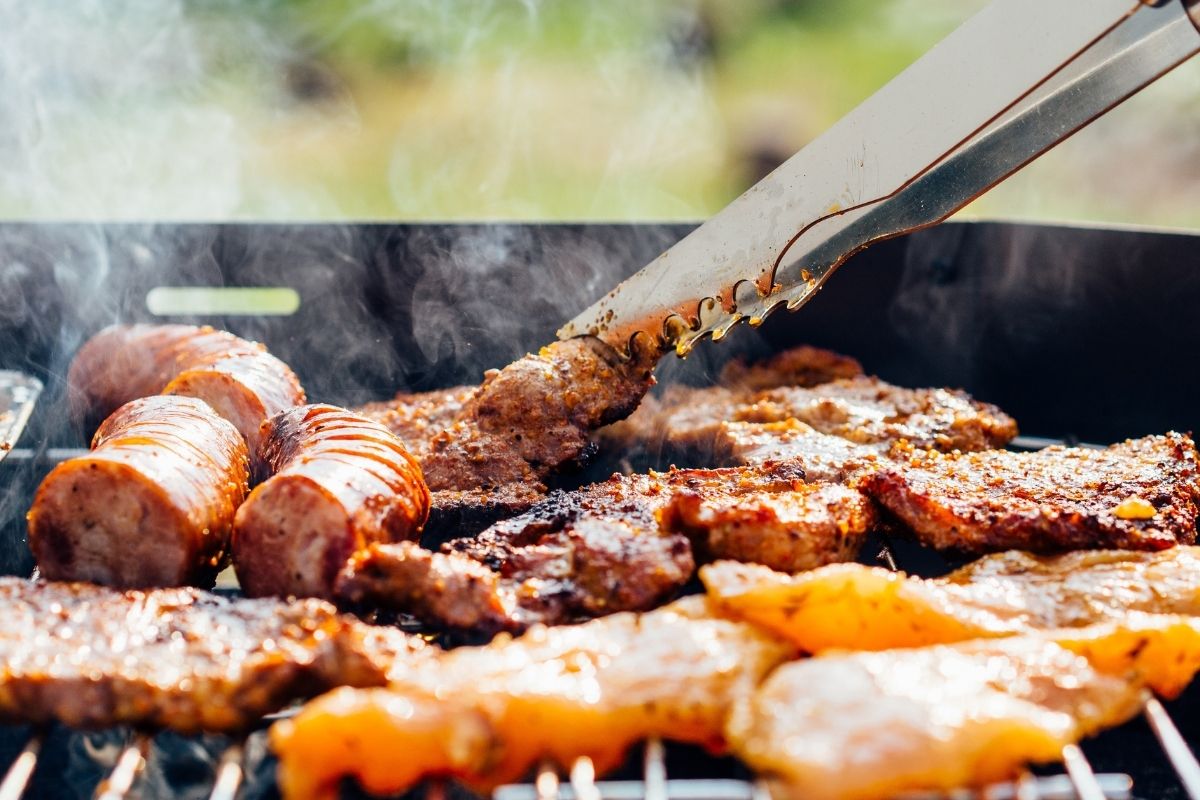
Cleaning (Routine & Deep)
While pellet grills might generate cleaner fumes and be the eco-friendly option over charcoal grills, how easy are they to clean after use?
Generally, wood pellet grills are easier to clean than charcoal ones. This is mainly because charcoal doesn’t actually decrease that much in size as it burns, so there is more waste product, and it marks everything it touches a ghastly black color.
Burned wood pellets produce next to no waste, so it’s much easier to get rid of in that respect. In terms of which is easier to clean, we’d recommend wood pellets over charcoal grills in this aspect.
Flavor Impact
In our experience, most people who prefer charcoal grills because of the taste only say that because it makes food taste how they remember grilled food tasting when they were younger.
The smoky flavor itself is more of a burnt flavor than smoky in our opinion, but each to their own.
The flavor is really where wood pellet grills excel because they have the unique ability to cook and smoke while infusing the meat or protein inside with a delicious natural wood flavor.
Don’t even get us started on the smell of a slow roasting wood pellet grill at work. It’s heavenly.
Initial Cost
Pellet grills tend to be more expensive to buy than charcoal grills. Perhaps this is because of the recent popularity of pellet grills or because they are a relatively new product compared with charcoal or gas barbecues.
Whatever the reason, a pellet grill is likely to set you back between $600 and $2000, whereas in charcoal grills you would be looking mostly in the hundreds rather than thousands of dollars for a new, quality one.
Ongoing Cost
Wood pellets can be harder to source than charcoal briquettes and more expensive too. Then again users of pellet grills would likely say that you get more flavor options with wood pellet grills due to the varieties of wood pellets you can get.
Charcoal is widely available and relatively cheap to buy, however, you should bear in mind that it takes a much larger volume of charcoal to cook the same thing as fewer pellets could.
In terms of running cost, you will probably find that there is not much difference between pellet and charcoal grills.
Ease Of Use
To use a pellet grill is a simple affair. Fill the hopper with pellets and set the right temperature. The auger will then feed the right amount of pellets into the firebox as it needs them.
If you want it hotter, then you turn up the temperature which will increase the rate that pellets are fed into the firebox. Simple.
Charcoal grills are user-friendly, but they aren’t quite as easy to use as pellet grills or smokers. To set up your charcoal grill you will need either a charcoal chimney or lighter fluid as well as a lighter to get it going.
Once the fire has established you will need to wait for around twenty to thirty minutes to make sure the coals are hot enough to cook on.
Versatility
Wood pellet grills are amazing at grilling – but they’re also able to smoke BBQ low and slow. And since they operate similar to a convection oven, you can also bake and braise on them too.
Charcoal grills can be used to both grill for a traditional barbecue experience and to smoke with ease, but the smoky flavor they create is not the same as you would get with a wood pellet grill.
Temperature Range
Pellet grills are seen to be somewhat limited in their temperature capabilities in that they can reach up to ranges of 500 degrees Fahrenheit, but charcoal grills can get much hotter than that.
An experienced charcoal king or queen should be able to achieve temperatures over 800 degrees Fahrenheit.
Final Thoughts
The most important thing to consider when buying a new grill is to consider which type of grill is going to fit best into your lifestyle. You’ll need a grill that ticks the boxes that are important to you.
Do you like the distinct charcoal flavor you get when using a charcoal grill? Or is the remarkable convenience of a pellet grill more important to you?
These two types of grills have different pros and cons, so it is important to know what you like before making a purchase.
If you’re thinking about getting a pellet grill, you’ll also need to think about the initial cost of one and consider how you will justify it. One way you might be able to decide between the two is to ask yourself how often you plan to use it.
A good rule of thumb is that if you plan to use it once every few days, at least in the summer, then a pellet grill might well be worth the initial investment.
On the other hand, if you’re on a budget, you could arguably get more grilling space for your money with a charcoal barbecue.
In the end, deciding between various types of grills is a personal decision and the right answer is going to be different for different people.
If you have some cash to burn (not as fuel, obviously), and you want to take your backyard barbecues to the next level, then you might seriously consider a wood pellet grill, and you’ll soon be the envy of your whole neighborhood, but it really does come down to personal preference.
The post Pellet Grill vs Charcoal Grill – Which Is Better? appeared first on Own The Grill.
]]>The post Best Charcoal Chimney Starter – What’s the Best Way to Fire Up Your Grill? appeared first on Own The Grill.
]]>It’s one of the best ways to cut down on your prep time, and also the work that goes into lighting up your fire. There really isn’t a downside or reason that you shouldn’t get ahold of one!
In this article, we’ve rounded up a best charcoal chimney starter list. Read on if you want to see our top picks, reviews, and tips for how to get the most out of your charcoal chimney starter.
Best Charcoal Chimney Starter – Quick Overview
One of most common and widely agreed upon pain points associated with charcoal grills is lighting your charcoal briquettes. If there’s anything that’s a turn off for new grillers to use a charcoal grill, it’s probably the hassle associated with lighting a proper charcoal fire. Frankly, there aren’t a ton of great options out there to help with it.
You could use an electric charcoal starter, but they can get extremely hot. So hot that they can actually be pretty dangerous, and serious accidents can be right around the corner if you don’t take extra precautions.
Some recommend that you use lighter fluid with charcoal – but that’s a strategy we generally like to avoid.
A chimney starter is by far the superior way to light your charcoal fire. With these simple, safe, and straight forward contraptions, literally all you have to do is light it up and let it go to work. After about 15 minutes, you’re left with a burning charcoal fire that’s ready to grill up some delicious food.
Without any further ado, let’s get into our reviews! Along the way, we’ll go over the features you should look out for, and how to differentiate between seemingly similar products.
Best Charcoal Chimney Starter Reviews
Weber Rapid Fire Chimney Starter
- Designed to quickly produce hot coals for cooking
- Specialized cone-shaped grate and durable construction for longevity
- Ergonomic handle for comfortable use
Weber is one of the most trusted names in outdoor cooking, and their Rapid Fire Chimney Starter is deserving of a place at the top of our best charcoal chimney starter list. They advertise these starters as the easiest and fastest method for lighting all types of charcoal – and they aren’t wrong.
About 20 to 25 minutes is all it takes to get your fire started. A cone shaped grate design helps to increase the rate at which ignition occurs throughout the stack of charcoal by providing optimal airflow.
The body of the unit is made of aluminized steel that has been hot-dip coated on all sides with aluminum-silicone alloy. This unique process results in a material that possesses a combination of both steel and aluminum – and it does a fantastic job of lighting your coals.
A couple of really nice safety features are built in around the handle to greatly reduce the risk of accidents. First, there’s a two handle design that gives you maximum control when you’re pouring your lit charcoal. A large heat shield also protects the handle from extreme temperatures.
High volume cooking also isn’t an issue here, as this chimney has a high capacity bin and is 12 inches tall by 7.5 inches in diameter. On top of that, it’s built to last literally for decades with proper care.
Things We Like:
- Simple, straightforward, and effective design
- Aluminized steel is durable and does an incredibly good job of creating a hot environment for your coals
- Safety features abound – two handles and heat shield greatly reduce the risk of accidents
- Cone shaped internal grate helps coals light fast. Get going in less than 25 minutes
- Ventilation and airflow design features are well thought out
- Great price
Things We Don’t:
- While there’s plenty of capacity for most grilling and smoking jobs, it’s not the largest volume chimney starter available. Just something to keep in mind if you have a large grill
Oklahoma Joe’s Half-Time Charcoal Starter
If you’re in the market for a large capacity chimney starter, the Oklahoma Joe’s Half-Time XL Charcoal Starter is a great choice and one of the easiest chimney starters to use.
In fact, if you regularly use larger lump charcoal in your charcoal grill or kamado grill, this is the probably the perfect choice for you.
The dimensions of the chimney starter are 8 inches tall by 12 inches in diameter. That’s enough volume to fit up to 100 charcoal briquettes, or a generous amount of lump charcoal.
An intuitive handle design keeps the handle cool and safe even when you have an ignited charcoal fire. On top of that, great ventilation and airflow through the charcoal bin means that your coals can light in as fast as 15 to 20 minutes.
Stainless steel is the material of choice in the construction of this chimney, and it will last you a long time with proper care and routine cleaning.
Things We Like:
- Oversize coal basket is ideal for high capacity grills or for lump charcoal
- Coals light faster compared to many other chimneys
- Handle stays cool and safe after your fire is hot and roaring
- Stainless steel used for construction is highly reliable and durable
- Oklahoma Joe is a trusted brand in the BBQ space
Things We Don’t:
- When the basket is completely full, it can be a little tough to manage. As long as you pay attention and use some BBQ gloves, you should be completely fine though
Weber Compact Rapidfire Chimney Starter
On the other end of the size spectrum, the Weber Compact Rapidfire Chimney Starter is intentionally designed to be a more compact fire starter. It gets our vote for best charcoal chimney starter for on the go grilling – it’s perfect to take with your portable grill on a camping or tailgating trip.
Dimensions wise, it’s 8 inches tall and 5.75 inches in diameter and can light coals in as little as 15 minutes.
As far as the design goes, it’s quite similar to the Weber 7429 Rapid Fire – just smaller. It’s the ideal choice for smaller grills or shorter grilling sessions.
All of the safety features you like to see are still there. Namely, a cool touch handle and heat shield are both in place to make sure that your hands are safe while the chimney is in use.
Obviously with this being a smaller unit, it’s best used with smaller briquettes and won’t work for lump charcoal.
Things We Like:
- Compact design is lightweight and great for on the go BBQ
- Coals light really fast since the chamber isn’t that big
- Cool touch handle and heat shield are ideal safety features
- Very affordable
- Weber is a trusted brand and makes high quality products
Things We Don’t:
- Not great for long grilling sessions or lighting for larger grills
- Doesn’t work for lump charcoal or larger briquettes
Char-Griller Charcoal Grill Chimney Starter with Quick Release Trigger
The part of using a chimney starter where you have to be the most careful is when you’re dumping your lit coals into your grill. The Char-Griller Chimney Starter with Quick Release Trigger went the extra step of creating a design feature to help with that step in the process.
Right in front of the handle is a release lever that will drop your hot coals into your grill’s fire basket with no tipping or messy pouring of your coals. The release also keeps the hottest coals on the bottom and the least hot ones on top to maximize efficiency of your fire in the grill.
If you’re new to charcoal grilling or are nervous about using a chimney starter, this might be the best charcoal chimney starter for you simply because of this feature.
Aside from that there are plenty of great, if expected, features included with this product. The handle is made of ABS plastic with a built in heat shield for maximum safety while handling. Galvanized steel is the material of choice, which is highly durable.
As far as capacity goes, this starter is also on the higher end of the spectrum with dimensions at 12 inches tall and 7.75 inches in diameter.
Things We Like:
- Great price point
- Quick release feature is practical and unique
- Included safety features include cool touch handle and heat shield
- Generous amount of capacity to work with
- Durable ABS handle and galvanized steel body
Things We Don’t:
- You have a lot less control over how your coals come out of the chimney when bottom dumping
- Quality of the moving parts in this unit could be better
Homenote Rapid Charcoal Chimney Starter Set
If you’re completely starting from scratch with your accessories, then a starter kit like the Homenote Rapid Charcoal Chimney Starter Set is a great place to start.
In addition to a chimney, it comes with BBQ gloves and an air blower. The BBQ gloves are very nice to have around – the air blower isn’t really necessary, but it can definitely speed up the process of lighting your pile of coals.
This starter is 11.5 inches tall and 7 inches in diameter, so you’re afforded plenty of space to light a medium to large sized pile. It’s made of zinc plated steel and has a wood handle design to help prevent burns.
The design of the chimney itself is a little inferior to the others on this best charcoal chimney starter list – mostly due to a lack of airflow and ventilation systems.
Things We Like:
- Comes with BBQ gloves in addition to the chimney
- Built in heat shield and wood handle are great for safety
- Nice capacity for medium sized piles of briquettes
Things We Don’t:
- The extras drive up the price, and a couple of them are pretty unnecessary
- Ventilation could be better and would lead to quicker lighting times
Char-Broil Half-Time Charcoal Starter
Char-Broil is another trusted name in the outdoor cooking space, and their iteration of the half-time chimney starter is worthy of consideration.
Most notably, this unit has a wide diameter at 8 inches and can fit larger coals like lump charcoal. It is only 8 inches tall though, so volume wise it’s not quite as much as some of the other choices on this list.
There’s also a built in heat shield and the plastic handle rests far enough away from the main bin that you won’t be worrying about scorching your hand.
Things We Like:
- Wide 8 inch diameter unit is ideal for large pieces and lump
- Built in heat shield and far away plastic handle are nice safety features
- Lights coals really quickly – get going in around 15 minutes
- Good price
Things We Don’t:
- Since it’s not as tall, you sacrifice some volume. Not ideal for large cookers or even standard sized grills
- Dumping is a little harder with the handle so far away from the bin
Don’t Grill Again Without One of These!
There just simply isn’t a good reason to not utilize the best charcoal chimney starter. Even professionals and experienced pit masters use these tools to light their flame. There’s no simpler or safer way to do it.
Compared to all of the other ways you could light your charcoal, this is the best way by far. All you need aside from your chimney and coals is a little bit of newspaper or lighter cubes plus a lighter. That’s it! You can leave the lighter fluid at the department store.
What Will a Charcoal Chimney Starter Do For You?
Alright, from a high level it lights your charcoal… obviously. But what exactly does this little contraption do to accomplish that feat?
Essentially, it’s just a cylinder shell that contains a pile of charcoal set in a basket. There are holes around the base to promote airflow and also to help light your coals.
From there, once you light the bottom coals, those begin to burn and the flame works itself up the stack until all of the coals have ignited.
How to Use a Charcoal Chimney Starter
In case you were looking for a little tutorial, here’s how to use a charcoal chimney starter in step by step form:
- If necessary, remove your cooking grate from your cooker (some have hinge mechanisms where this step won’t be necessary).
- Place a wad of newspaper or fire lighter cubes at the bottom of your chimney starter.
- Put your chimney either on the bottom of your cooker, fire basket, or on a surface that’s safe to start a fire on.
- Fill your chimney’s bin with charcoal.
- Ignite your newspaper or fire lighter cubes through the holes in the bottom of your starter. You can also use a butane torch if you want more horsepower.
- Sit back and relax while your fire works its way up the chimney. After about 15 to 20 minutes, all of your briquettes should be gray and lit.
- Carefully pour your coals into the bottom of your grill or into the designated fire basket.
Here’s a great video showing how simple and straightforward this process is:
Buying Tips
When you’re comparing different products, it might not seem like there’s much difference between one chimney to the next. While that’s true to a degree, there are definitely a few things you should keep an eye out for.
Charcoal Capacity
Probably the most important thing to look at is how much charcoal can your chimney hold? The answer to that question probably has a lot to do with how big your cooker is, whether you’re using a smoker vs a grill, and how long your cooking sessions are going to be.
The other thing to consider here is whether you typically use charcoal briquettes or lump charcoal. Lump charcoal is a lot bigger and will require a wider diameter chimney if you plan on lighting it efficiently.
Safety Features
The whole purpose of using a chimney starter vs other methods is that chimneys are considerably safer, in general. If your starter doesn’t include basic safety features, what’s the point?
In particular, you should look for a product whose handle is a safe distance away from the main bin and also has a heat shield built in to add a protective layer between your hand and the heat.
Quick release starters sound safer in theory but you have to focus a little bit extra to make sure you don’t accidentally release your coals prematurely.
Ventilation
Ventilation and oxygen flow is a key ingredient to any healthy fire. Without good ventilation, your charcoal pile will take forever to burn.
On the other hand, a properly ventilated starter will burn at a quicker rate, so you can spend less time waiting around for your BBQ!
Construction Material
Since your chimney will get extremely hot, you need a metal that can withstand the heat and that will also last a long time through repeated use. Most starters are some kind of steel – but you should double check before you make any sort of purchase.
Also, be sure to stay away from any painted starters, they simply aren’t worth the trouble. Only super expensive, specialist paints would be able to withstand the repeated heat beating that the best charcoal chimney starter takes.
Safety First
Even though these starters are by far the safest and easiest way to light up your charcoal grill, you still can’t fall asleep at the wheel. Chimney starters can get your coals upwards of 550°F, and any time you’re handling materials that hot, you need to be careful.
Don’t ever use them with children present, and even make sure all adults in the area are aware of what’s going on. The last thing you need at your cookout is somebody knocking a hot pile of coals over onto themselves – that would be extremely bad news!
Use care when you pour your coals into your cooker. Take it slow, and use BBQ gloves. And take some time to learn how to put out a charcoal grill safely.
Final Thoughts
For all of my charcoal grillers and smokers out there, the best charcoal chimney starter is an absolute must have for your arsenal. It’s the quintessential way to light your coals, and you can spend more time focusing on the best part – the food!
Even though these contraptions look pretty basic, there’s more than meets the eye. I’ve found over time that it’s worth the extra couple of bucks to go with a reputable brand compared to a cheap imported piece of crap. It’s worth it in the long run.
Hopefully after reading this guide, you now know how to differentiate between what’s legit and what isn’t. For my taste, I’d go with a Weber chimney starter for “regular” grilling and if you need an oversize starter, the Oklahoma Joe is what I use.
Which one did you end up with? We’d love to hear about it in the comments section below.
The post Best Charcoal Chimney Starter – What’s the Best Way to Fire Up Your Grill? appeared first on Own The Grill.
]]>The post Lump Charcoal vs Briquettes – What’s the Difference? Which Best for Your Grill or Smoker? appeared first on Own The Grill.
]]>As it turns out, charcoal briquettes and lump charcoal are quite different from one another.
If you want to learn about the similarities and differences between these two types of fuel that feed our charcoal grills, then you’ve come to the right place. In this article, we’ve compiled a complete comparison of lump charcoal vs briquettes. By the end, you’ll have a clear picture of what each of these types of charcoal are best for – and which is ideal for use in your cooker.
What Is Lump Charcoal?
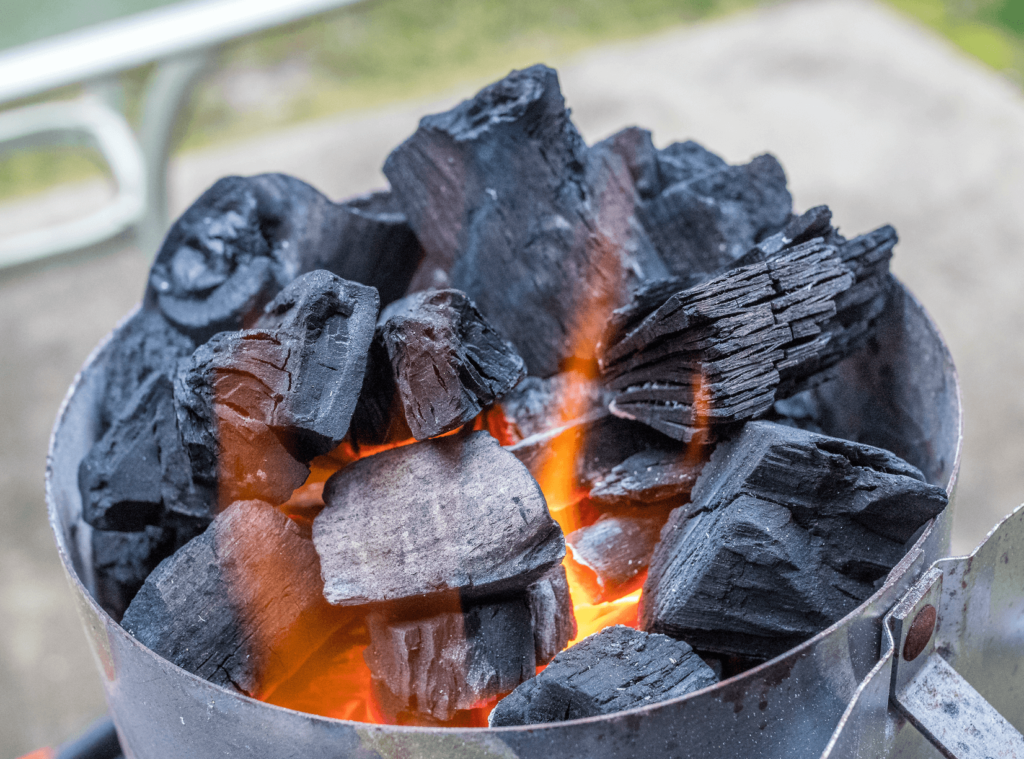
So, what exactly is lump charcoal and how does it differ from the traditional briquettes you’d find at the local store?
From a high level lump charcoal is a charcoal fuel made by healthier and sustainable methods – many people describe lump an “organic” version of charcoal. We’ll get into the process of how lump charcoal is made in a moment, but the nuts and bolts of it is that zero additives, chemicals, or lighter fluids are used at any point in the process of making lump charcoal.
Aesthetically, lump charcoal kind of just looks like burnt or charred wood logs. You might also see some branch looking pieces or even pieces that look like they are a small section of furniture – that’s perfectly normal! Many lump charcoal manufacturers utilize repurposed wood in their supply, and it’s all 100% food safe.
Lump charcoal imparts a distinct, clean, and robust smokey flavor profile that is sure to elevate the taste of just about any type of food you can put on the smoker or grill.
- 100% natural - pure, dense South American hardwood blend
- Low ash and superior burn (max temperatures over 1,100ºF
- Waterproof & dustproof packaging with carry handle and zip top closure
How Is Lump Charcoal Made?
Lump charcoal is made by taking hardwood logs and pieces and burning them in an oxygen free environment. The wood is burnt until all impurities are gone and the wood is depleted of any sap, oils, moisture, or other chemicals that might have been inside. All of these substances and impurities are essentially vaporized out of the wood during this burning process.
This process is labor intensive and not the most efficient – which is part of the reason why lump charcoal typically runs more expensive compared to other types of fuel. It takes quite a bit of time to get a solid yield of large, usable pieces.
For reference, only about 15-20% of the hardwood by weight that begins the process makes it out to be lump charcoal that would end up in a bag you’d buy. It more or less takes 125 pounds of hardwood to fill a 20 pound bag of lumpwood.
It’s actually possible for you to see the process first hand by making your own lump charcoal at home!
Benefits and Drawbacks of Lump Charcoal
Now that we’ve gone over what lump charcoal is and how it’s made, let’s take a look at some specific benefits and drawbacks that lump charcoal has to offer.
Lump Charcoal Pros
- Lump charcoal is all natural, and completely void of chemicals, additives, or impurities. This purity translates directly to the quality of your food.
- This type of fuel lights quickly and burns hot. Since it is very reactive to oxygen, you won’t have to spend time messing around with lighting your lump charcoal – it’s a simple and easy process.
- Since it’s so reactive to oxygen, you can easily control your grill or smoker’s temperature with vents and dampers.
- Lump does not produce very much ash, so you can expect minimal hassle and time required to extinguish them after you cook.
- Lots of the wood used is repurposed, which in a small way is a contribution to a healthier planet.
Lump Charcoal Cons
- Lump charcoal is more expensive – even though it burns efficiently, your ongoing costs of fuel will definitely be higher compared to briquettes.
- Your temperature can get out of hand if you aren’t careful. Especially in well insulated cookers, it’s possible to get the heat too high and have trouble getting your smoker back down to the right temperature.
- You have to be careful which manufacturers you buy from – some will sell bags with too many unusable small pieces or dust, which is a frustrating experience to say the least.
What Are Charcoal Briquettes?
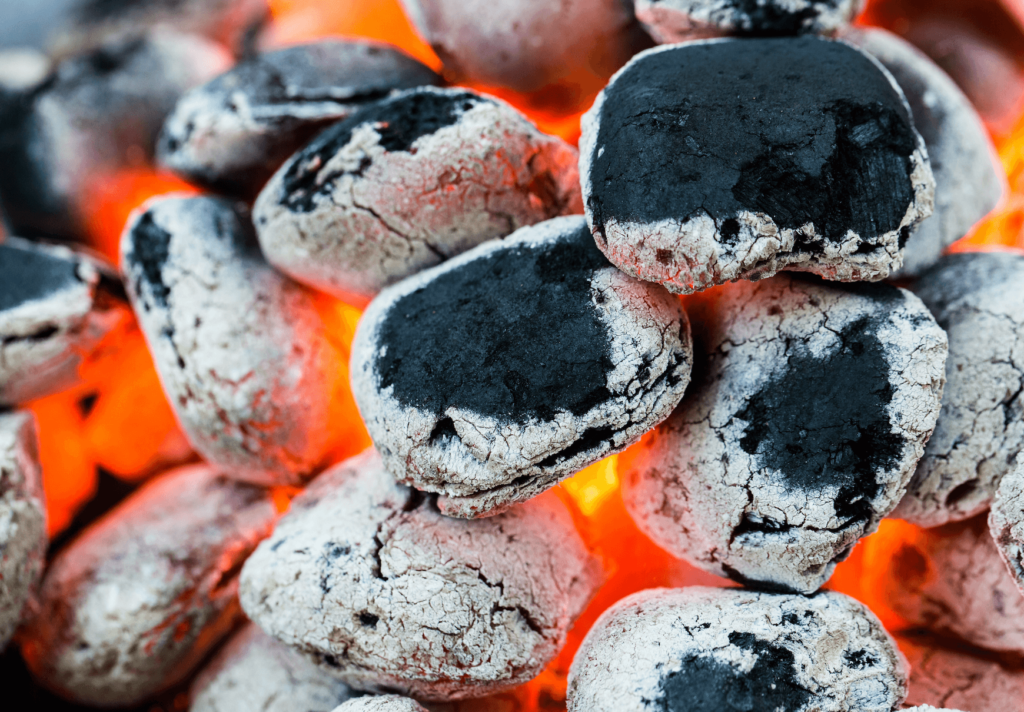
Charcoal briquettes are the type of charcoal that most people are familiar with. Briquettes are widely available and sold at almost every grocery and home improvement store – no matter where you live.
By nature, charcoal briquettes are slower to light and burn longer compared to lump charcoal. This makes them a nice choice for longer smoking sessions, as they are capable of maintaining steady temperatures for long periods of time.
These small, pillow shaped pieces of charcoal are commonly mixed with additives or chemicals to help them light quicker. Although nowadays it’s easy enough to find briquettes that are all natural and don’t have additives, there is more processing that goes into the making of briquettes. A byproduct of the extra processing is that briquettes will leave a large amount of ash after you use them for a cook.
How Are Charcoal Briquettes Made?
Pillow shaped charcoal briquettes are made from sawdust and other wood byproducts. These components are compressed with binders and other additives at extremely high pressure, resulting in the little bricks that show up in your charcoal bag.
Most commonly, the binder of compressed charcoal briquettes is starch. Other additives can include borax, sodium nitrate, and limestone, amongst others.
Benefits and Drawbacks of Charcoal Briquettes
Here are the pros and cons of using charcoal briquettes as a fuel source for your smoker or grill.
Charcoal Briquettes Pros
- Briquettes burn for a long time. You can also easily maintain a steady temperature during longer smoking sessions with briquettes.
- Charcoal briquettes are cheap. On a per pound basis, briquettes are much more affordable than lump.
- Briquettes are better for creating temperature zones. Since the heat output is more steady and predictable, you can easily use briquettes to set up multiple heat zones on your grill.
- You can find briquettes just about anywhere – they are widely available and easy to get ahold of.
Charcoal Briquettes Cons
- Briquettes take a while to light up. And if you don’t invest in a charcoal chimney starter, it can be challenging to light up without using lighter fluid chemicals.
- Charcoal briquettes produce substantially more ash. This contributes to a longer clean up time and too much ash build up just flat out will make your life difficult for certain grill types and smoker types.
- Many types of briquettes have a chemical smell to them. Even if they don’t have a lot of additives in them, the processing required to create briquettes leaves a chemical like smell behind.
- They don’t burn as hot as lump charcoal. Although this can benefit some situations, it can be difficult or take a while to achieve searing temperatures or high heat grilling with briquettes.
Lump Charcoal vs Briquettes – Head to Head
Knowing a little bit more about both of these fuel types is key to understanding which might be the right choice for you. The answer to which is better between lump charcoal vs briquettes largely comes down to personal preference, with one notable exception.
If you own a kamado grill, we’d highly recommend sticking to lump charcoal. By design these cookers typically feature a minimal amount of space to collect ash, so using briquettes runs the risk of clogging up your air vents and completely ruining the cooking process. The good news for the kamado grill user is that kamados are particularly efficient when it comes to fuel consumption. Since ceramic grills are such good insulators, you won’t blow through your expensive, high quality lump charcoal too quickly.
For all other types of grills and smokers, which is better between lump charcoal vs briquettes is more subjective. Both fuel types work perfectly fine with the majority of cookers out there, so you just need to take your budget and personal preferences into consideration.
Personally, I prefer lump in most situations to briquettes for a couple of reasons – although I regularly use both for different cooks. I think lump charcoal is more ideal for grilling because it burns so quickly and so hot. When I get home from work and want to quickly sear a steak or some burgers, I’m not really interested in waiting around for 20 to 30 minutes while my charcoal briquettes come up to temperature.
Lump charcoal works much better for me in this kind of situation, and allows me to achieve beautiful sears quickly for my typical day to day grilling needs.
On the other hand, I’ll personally use charcoal briquettes combined with either wood pellets or wood chips when I’m smoking something. For the smoker, it’s nice to be able to light up charcoals and know they will burn at a consistent temperature for a long time. If you’re a seasoned pro on the smoker and better at building and managing fires, lump charcoal is a fantastic fuel for smoking too though.
One other consideration – briquettes will smoke significantly more than lump charcoal. Flavor wise, if you prefer strong smoke then briquettes might be your fuel of choice anyways. But if you prefer a lighter, more finessed yet still robust smokey flavor – then lump charcoal is the way to go.
Lump Charcoal vs Briquettes – Final Thoughts
At the end of the day, the lump charcoal vs briquettes debate comes down to what you find important in your food. If you prefer a more “organic”, all natural experience, then lump charcoal is the way to go. Lumpwood also makes life a little bit easier when you need to get the temperatures high for sear jobs, or if you’re cooking with a kamado grill.
Charcoal briquettes on the other hand are still a perfectly viable source of fuel for your grills and smokers. While they’re subjected to a little bit more processing, they are still 100% food safe and healthy – and are sure to impart classic smokey BBQ flavor onto your food. They’re also a little bit easier to manage for beginners and take a little bit longer to ignite.
Which one is your fuel of choice lump charcoal vs briquettes? We’d love to hear your feedback in the comments section below.
The post Lump Charcoal vs Briquettes – What’s the Difference? Which Best for Your Grill or Smoker? appeared first on Own The Grill.
]]>The post What are the Different Types of Smokers and Which Are Best? Our Complete Guide appeared first on Own The Grill.
]]>So whether you’re a beginner, or a seasoned pro looking to see what all of your options are, read on to find out which types of smokers are best for you!
What is a Smoker?
A smoker is an outdoor cooker that’s designed to cook foods low and slow for long periods of time. They’re also meant to add a smokey flavor to your food by exposing your meats and foods to the smoke generated by your fire.
As far as types of smokers go, there are a lot of different ones! Some are best suited for beginners, and some for experts. They come in all different shapes and sizes too. Read on to figure out which one is the best fit for you.
What Are The Different Types of Smokers?
Horizontal Offset Smokers
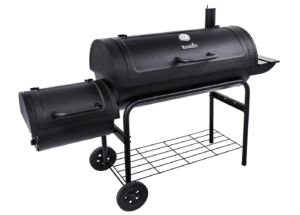 Horizontal Offset Smokers are what come to mind for me when I think about smokers in general. They just have that classic look and are often the types of smokers you’d find outside of a BBQ joint.
Horizontal Offset Smokers are what come to mind for me when I think about smokers in general. They just have that classic look and are often the types of smokers you’d find outside of a BBQ joint.
These smokers are the preferred choice of pit masters, and they have a little bit of a learning curve associated with them. If you’re a total beginner, it might take a few tries to start to get your fire and smoke right.
Of course, if you can tame the horizontal offset smoker, you’re handsomely rewarded with deeply complex and delicious BBQ. They have the ability to impart the sort of smokey flavor on your food that will satisfy even the keenest taste buds for smoked meat.
Horizontal offset smokers are made up of two main parts. First, there’s a main cooking chamber that’s typically pretty wide and has grates for placing your food. Typically, there are exhaust and intake vents on the main chamber that allow you to adjust your smoker’s airflow and temperature. There’s also a door that you can open to rotate your food and let out excess smoke if you need to.
The second main component is the firebox, which is offset to one of the sides of the main cooking chamber (hence the “offset” name). It has an access door and typically some vents built in as well. You light your fire in the firebox, and the generated heat and smoke is funneled to the main chamber. This indirect heating method will slowly cook and flavor your food with the smoke that comes off of your fire.
Some horizontal offset smokers will also have a grate on the firebox for direct heat grilling, turning your smoker into a smoker grill combo.
It’s worth noting that you can definitely find horizontal offset smokers out there for $300 or less – we’ve just found that these lack quality and often don’t retain heat as well as they should. Offset smokers also have a subset called reverse flow smokers.
Horizontal Offset Smoker Pros
- The best type of smoker for professionals and experienced pit masters
- Easily add more fuel or flavoring wood chips to your fire without opening the main cooking chamber. This is a HUGE feature that helps you maintain consistent temperature
- Many double as smoker grill combos, all you need is a grate installed over your firebox
- Built in ventilation systems let you control your temperature and smoke levels
- Can easily be used for cold smoking
- Ideal for cooking lots of foods at once or large cuts like brisket and beef ribs
- Ongoing fuel costs are pretty low – these smokers are efficient users of heat
- Quality offset smokers are built to last a lifetime with proper care
Horizontal Offset Smoker Cons
- Well built units can cost quite a bit of money, typically in the $1,000s
- The learning curve for temperature and smoke management is steep compared to other types of smokers
- Smoking in colder weather or climates can be a challenge
- They’re pretty big and heavy, so you need to make sure your patio or deck can accomodate
Great beginner offset smoker:
Vertical Offset Smokers
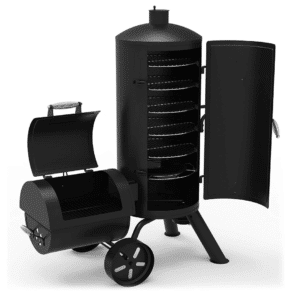
Vertical offset smokers are somewhat similar to a horizontal offset smoker in design, with a few key differences.
Most notably, the main cooking chamber on a vertical offset is set up with multiple cooking grates (often 4 or 5) stacked on top of each other in a chamber that’s fairly narrow but pretty tall. Heat and smoke travel through the main chamber vertically.
The offset box is to the side of the vertical main chamber and typically functions just like a horizontal offset firebox. This is where you start and manage your fire, and can even grill with direct heat if you have a grate installed.
The main chamber will have vents built in to help with temperature and smoke control, and also a front door for access to your food and the main grate areas.
One of the best things about vertical offset smokers is how much cooking area they provide considering how small their footprint is. Since all of the grates are stacked vertically, you can actually get a lot of food cooked at once on a smoker that doesn’t take up a lot of ground.
Vertical Offset Smoker Pros
- You can cook a TON of food with a smaller footprint thanks to the vertical main chamber design
- Can last for decades if looked after properly
- Not very many different parts are used in the construction of these smokers – which reduces your risk for breakage
- Ongoing fuel costs are low
- Many can double as a smoker and grill
Vertical Offset Smoker Cons
- Well made units are on the pricey end of the spectrum
- The large cooking chamber can be overkill if you don’t plan to cook for lots of people
- These are more of “specialty” types of smokers – other than a couple of models available online, they’re tough to find
Great beginner vertical offset smoker:
Water Smokers
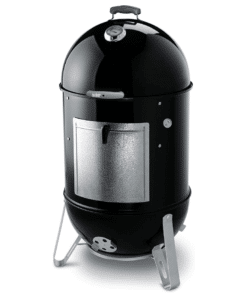 One of the most widely owned types of smokers on the planet is the water smoker. It’s because they’re really simple to use, take up minimal space on your patio, and produce some super delicious results.
One of the most widely owned types of smokers on the planet is the water smoker. It’s because they’re really simple to use, take up minimal space on your patio, and produce some super delicious results.
The anatomy of a bullet smoker is really interesting and sets you up for success as the pit master. At the bottom of the “bullet” is a charcoal tray where your charcoal and wood chip fuel goes. Right above your fire is a water pan which is there to evenly distribute heat across the cooking chamber. It also catches drippings from your food and helps to keep your smoked meats moist.
From there, you have either cooking grates, racks, or hooks where your food is placed while it cooks. Bullet smokers typically have an easy open lid and some kind of ventilation system to let you control the airflow into your unit.
These smokers are the ideal type of smoker for your backyard and have the perfect amount of capacity to cook for small and medium sized gatherings.
Water Smoker Pros
- Very inexpensive – bullet smokers are on the cheap end of the spectrum and still offer really nice quality
- Small footprint, the compact size is ideal for almost every type of patio
- Widely available, there are lots of brands and models to compare and choose from
- Great for on the go smoking. It’s not too hard to take bullet smokers on the go for your next camping trip or tailgating outing
Bullet Smoker Cons
- Lots of cleanup is involved, the water pan needs to be thoroughly cleaned after each use
- Not a lot of cooking capacity compared to other types of smokers
- Not great for direct heat grilling
Great beginner water smoker:
Kamado (Ceramic) Smokers
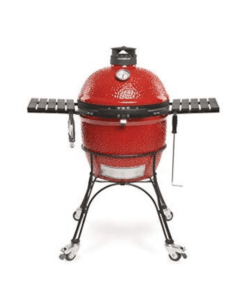 The kamado grill is one of my absolute favorite pieces of cooking equipment, regardless of type. A proper Kamado grill is also an outstanding smoker, and it’s got the versatility to be an outstanding grill and wood fired oven too.
The kamado grill is one of my absolute favorite pieces of cooking equipment, regardless of type. A proper Kamado grill is also an outstanding smoker, and it’s got the versatility to be an outstanding grill and wood fired oven too.
Kamado grills aren’t priced in the bargain bin. A typical quality one that’s made of ceramic will run you at least $1,000 and likely more. But these things are built to last forever, and they are of the utmost quality in terms of cooking ability and integrity.
These ceramic cookers rely on millenniums old technology that’s tried and true. Ceramic is an outstanding insulator, and built in dampers and vents let you precisely control the amount of airflow that goes into your grill, and by extension temperature. The ceramic construction and egg shaped design let you maintain a constant low temperature for very long periods of time – perfect for smoking.
All you need to convert your kamado grill between a smoker and a grill is a heat deflector plate. Most nice kamado grills come standard with one. All you have to do is place the deflector in for indirect heat smoking and remove it for direct heat grilling.
Kamados are great because they’re designed to maintain temperatures as low as 200°F for smoking and as high as 700°F for searing and baking.
These kamado smokers are best fueled by lump charcoal, and you can achieve some of the absolute best flavorings by smoking in a kamado grill.
Kamado Smoker Pros
- The ultimate premium versatile grill and smoker. You can smoke, sear, grill, and bake the most delicious foods on a smoker
- Made of the highest quality materials. Kamado Joe and Big Green Egg in particular both use some of the most premium quality ceramic to make their grills
- Easily maintains constant temperatures for extended periods of time with minimal work
- Smaller profile compared to some other smokers – they are pretty easy to make custom built cabinets for too
- Great for smoking in cold weather thanks to ceramic insulation
Kamado Smoker Cons
- One of the most expensive types of smokers on this list
- It can take a while to get your temperatures down. While temperature management is fairly easy on a Kamado, if you crank it up too high it can take a super long time to get it back down
- Very heavy, don’t plan on taking a Kamado smoker on the go with you
Great beginner Kamado smoker:
Pellet Smokers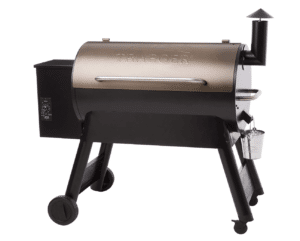
Pellet smokers are another type of smoker that offer tons of versatility – but they’re quite different from kamados. Instead of 3,000 year old technology, pellet smokers rely on newer innovations to the grilling space.
Most notably, they rely on electronics and an automatic feeding system to feed wood pellets through an auger that then gets ignited to cook your food. All of your temperatures, smoke levels, and other aspects of your cook can be controlled from a built in LED display – or even a phone app for some brands.
Because of that, pellet grills are known as “set it and forget it” style cookers. That is, you can choose your temperature and smoke settings and kick back while your smoker gets to work for you. Minimal to no babysitting is required.
Pellet smokers utilize wood pellets designed for smoking. They’re repurposed wood and sawdust that get compressed into little wood capsules – which are then ignited in the pellet grill. It’s a super high tech and sustainable way to get to enjoy wood fired taste!
Instead of a firebox, pellet smokers have a hopper where they load their pellets. It’s from the hopper that they are fed through the auger.
Pellet Smoker Pros
- Super easy to use and a great option for beginners and pros alike. The easiest way to get wood fired taste
- Versatile and great for both smoking and grilling
- Wood pellets for smoking are cheap and widely available
- Lots of brands, sizes, and prices to choose from
Pellet Smoker Cons
- Nice pellet smokers can get a little pricey
- If you don’t have a big hopper, you can run out of fuel mid cook if you aren’t careful on longer smoking sessions
- You’re relying on electronics that are more prone to break
Great beginner pellet smoker:
Electric Smokers
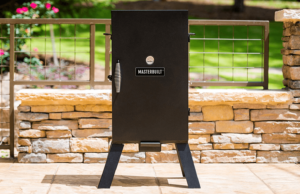
Electric smokers are another type of smoker that falls into the set it and forget it category. They rely on an electrical plug in connection that heats an electric heating element, similar to what you’d find in your oven.
Electric smokers are as hands off as they come. You literally just have to plug it in and turn a dial to get going. If you want to add wood flavor, most electric smokers have a drawer or tray where you can add wood chips for extra flavoring.
With electric smokers in particular, you have to be careful about what you buy. There are a lot of cheaply made units out there that are a complete waste of money. You’re buying a unit that relies on electronics, and you want to make sure you buy something that’s going to last.
The other consideration with electric smokers – even with wood chip flavoring, your food won’t pick up the same level of smokiness as it would in a charcoal smoker. It’s just a slightly less authentic smoking experience. The food from electric smokers is still delicious! It just lacks some of that traditional smokey BBQ flavor.
You may have noticed that electric smokers share some similarities with pellet smokers – if you’re interested in these two smoker types, check out our electric vs pellet smoker comparison guide next for more.
Electric Smoker Pros
- Small, compact profiles compared to many other types of smokers
- Incredibly easy and straightforward to use
- Despite the small profile, the vertical design of electric smokers means multiple grates and lots of cooking surface area
- Typically on the cheaper end of the spectrum
Electric Smoker Cons
- You have to store your smoker under a cover or indoors to protect the electronics
- Can’t use these units as a grill, no direct heat option
- Food lacks the deep flavor and complexity of charcoal and wood fired smokers
- Lots of cheaply made units are out there in the marketplace
Great beginner electric smoker:
Drum Smokers
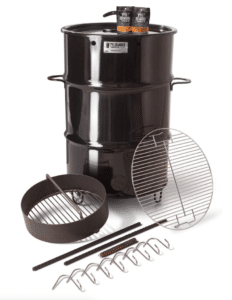
From a general design perspective, drum smokers are about as simple and basic as it gets. That’s not necessarily a bad thing though, as some incredible award-winning BBQ has been made from drum smokers before.
At the bottom of a drum, you have a basket for your heat source of charcoal and wood. Above the charcoal basket, you have a grate, racks, or hooks where your meat is placed while it smokes. There are also vents built into the top and bottom of the drum to help you control your temperature.
Since drum smokers are so simple, you actually see quite a few homemade iterations out there! If you want something that’s professionally designed and made, there are plenty of drum smokers out there on the market too.
Drum Smoker Pros
- Simple and straightforward design, also typically pretty cheap
- A small footprint means it won’t take up too much space on your patio
- Great at maintaining temperatures for long periods of time
- You can make your own drum smoker at home with only a few parts
- Most can be converted for direct heat grilling
Drum Smoker Cons
- Not the most aesthetically pleasing type of smoker – in fact, these are fondly (or not so fondly) known as ugly drum smokers by some in the outdoor cooking community!
- Not the most cooking area compared to other smokers
Great beginner drummer smoker is:
Propane (Gas) Smokers
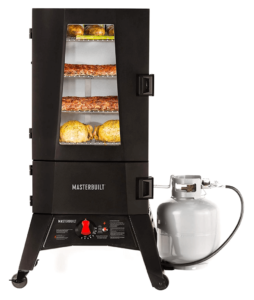
If you’re in the market for a set it and forget it smoker – the propane smoker is another type of smoker that could be a great fit for you. Functionality wise, it’s pretty similar to an electric smoker. Instead of a plug in, there’s a hose that connects to a propane tank.
All you have to do from there is open your propane tank, turn a knob on your smoker, and you’re rocking and rolling from there. A gas burner ignites the propane to heat and cook your food.
The frustration with these types of smokers is that most don’t come with a temperature gauge built in. So it might take a couple of tries to get used to how far you need to turn the dial to achieve certain temperatures.
Propane Smoker Pros
- The ongoing cost of propane fuel is fairly cheap
- A true set it and forget it style of smoker
- Doesn’t take up very much space
- Easy to use and very cheap to acquire one
Propane Smoker Cons
- Some of the cheaper units leak heat and lead to poor results
- Refilling your propane tank can become a hassle
- You can’t convert these smokers for direct heat grilling
Great beginner gas smoker:
Which Types of Foods Can I Smoke?
You can smoke some good food! Smokey flavors interact really well with a wide variety of foods.
In fact, we’ve dedicated an entire post to our favorite meats for smoking, but here are a few ideas to get you started:
Fuel Type
Smokers are fueled by any of the following fuel types:
All of these types of fuel have their pros and cons too. Typically lump charcoal, briquettes, and wood will lead to the tastiest, most flavorful results. These types of smokers typically have a learning curve and will take some practice to master.
Gas and electricity fueled smokers on the other hand will be much more convenient to use and won’t require any ongoing fire management while your food cooks. Because of that, they’re great choices for beginners.
Versatility
Unless you have a ton of space on your patio, you may be looking for something that’s versatile and will allow you to grill in addition to smoke. Electric smokers and gas smokers in particular are completely unable to convert to direct heat grilling.
If versatility and quality are important to you, kamado grills and pellet smokers are a great place to start. Both do a spectacular job of both smoking and grilling, and kamados are even fantastic pizza ovens as well.
How Big Is Your Crowd?
How many people do you typically cook for? Is it just for small groups of friends and family? Or are you the type to host massive cookouts and family reunions?
The thing to keep in mind with smokers is that your food takes a long time to finish cooking. On a grill, your food will cook quickly and you can grill in multiple batches to get away with a smaller cooking surface for a larger crowd.
That’s not the case for a smoker. If you’re smoking your favorite type of meat for 6+ hours, you can’t just throw another batch on if your guests are still hungry. You need to have enough cooking area from the start to handle all of the food to feed your crowd.
Types of Smokers – Final Thoughts
Hopefully, by now you have a solid understanding of the types of smokers out there! If you were on the fence about a certain type, maybe now the best choice for you is more clear.
In any event, it’s great to know what is out there in the world of smoking. Which type of smoker do you have at home? Let us know about it in the comments section below and which one is your favorite!
The post What are the Different Types of Smokers and Which Are Best? Our Complete Guide appeared first on Own The Grill.
]]>The post What Are the Different Types of Grills? [& Guide To All Types] appeared first on Own The Grill.
]]>Alright, that last part is a little bit of a stretch! But in all seriousness, there are countless grill configurations and options out there – and it can be overwhelming to choose one of them to best suit your needs.
There are lots of factors to consider when it comes to comparing different types of grills. Surface area, which types of cooking they can do, temperature control, and many other things come into play.
We’ve created this resource to highlight all of the different options on the market, with the hopes of equipping you with the knowledge to know and choose the perfect grill for your needs.
Remember, at the end of the day it all comes down to your personal preference. But in the rest of this post, we’ll get into the different types of grills and highlight the pros, cons, and distinctions of each.
Types of Grills
Gas Grills
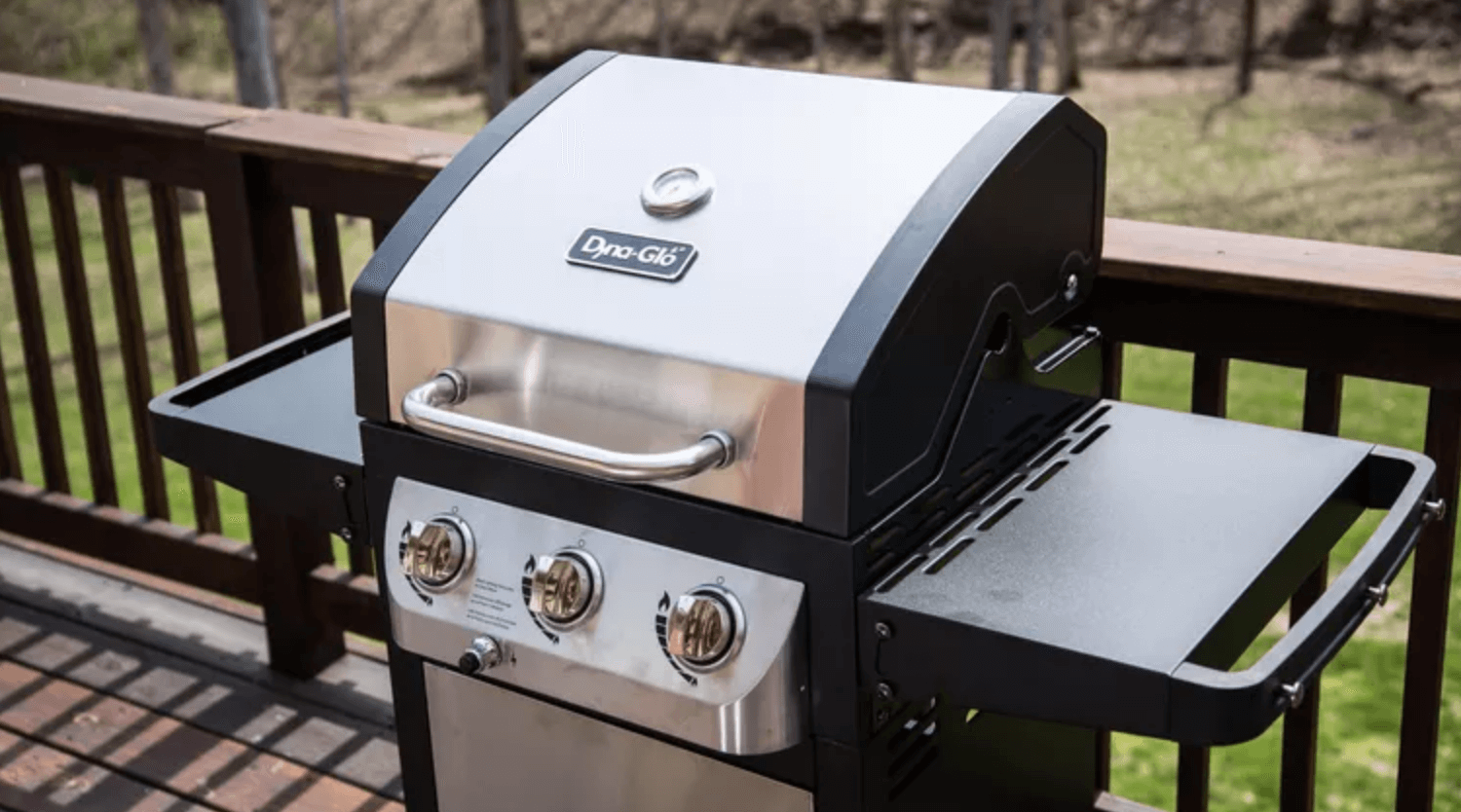
Gas grills are the most widely used type of grill across the world today. It’s not hard to see why; they’re convenient, efficient, and versatile.
They’re the perfect type of grill for the casual griller or beginner due to how easy they are to use. With minimal effort, a gas grill can reach high temperatures quickly, and can make some excellent quality food for your family and friends.
That’s not to say the pros don’t use gas grills – far from it. You’ll find some top pit masters utilizing easy-to-use gas grills at their homes and restaurants.
Gas grills are also very straightforward and easy to clean. For me personally, this is a huge turn on because the last thing I want to do after enjoying a delicious meal is to have to clean a bunch. Within the gas grill genre there are a few different variations:
Propane
Gas grills are fueled by either propane or natural gas. Propane grills are in nature the more portable of the two, because propane is stored in portable tanks that can typically be bought at your local supermarket. Propane grills are super easy to use, but you’ll need to refill your propane tank from time to time.
Natural Gas
Natural gas grills connect to your home’s built in natural gas line, and are often used for built in grills. However, some freestanding grills (including one of my grills!) can be fueled via a natural gas connection. Natural gas grills eliminate the need to ever need to go to the store to buy fuel. You just pull it out of the preexisting gas lines in your house.
Infrared Grills
Infrared grills are powered via either propane or natural gas, and rely on infrared technology which spreads heat evenly across the entire grilling surface. This happens extremely fast, and the infrared technology also prevents the flames from reaching the grates. Infrared grills are known for zero flare ups, super even temperatures, and are great for searing in addition to “normal” grilling needs.
Flat Top Grills
Flat top grills are typically fueled by a propane connection, and distinguish themselves with a flat, griddle surface. As far as food results go, flat top grills tend to make juicier food because none of the drippings fall below grates and vaporize.
The tradeoff is that flat top grills will typically make slightly less flavor rich results compared to a grill with grates for the exact same reason that the drippings don’t vaporize and smoke back up into your food.
Flat top grills are a fantastic way to make breakfast, burgers, sauté veggies, and many other practical uses.
Freestanding
A freestanding gas grill comes with the added benefit of mobility. They are not attached to anything our built in to a cabinet, so you can move them around freely and as needed. Freestanding gas grills can be powered by either propane or natural gas.
Built-In
As you’d expect from the name, built-in gas grills are built in to a permanent structure like a cabinet or island cooking base. Built ins are perfect for those looking to take their outdoor cooking space to the next level – and they’re typically high end grills or BBQ Islands.
With proper design, you can maximize space efficiency and have a powerful grill fit into a convenient section of your outdoor kitchen. Built-in gas grills are typically fueled by natural gas connections.
Gas Grills Pros and Cons
Pros:
- Gas grills can consistently grill delicious food – anything from beef, fish, poultry, veggies, and much more.
- Super convenient. Gas grills heat up and cool down quickly and require minimum prep time or clean up time. If you envision yourself throwing food on the grill after work, a gas grill is perfect because you don’t have to deal with building and cleaning up a fire.
- There is a gas grill for everybody. You can find gas grills at budget prices on one hand. On the other you can obviously spend quite a bit on a gas grill – some larger grills with lots of custom features get up into the $5,000+ range. You can also find grills at every price point in between!
- Fuel costs are less expensive compared to charcoal or pellet grills.
Cons:
- Foods cooked on gas grills lack that extra smoky flavor that many of us love.
- Poorly made units have a tendency to distribute unevenly and inconsistently. Be sure to look for units that are built from sturdy materials like stainless steel. Cheap units can have a tendency to heat unevenly.
Gas Grill Recommendation for Beginners
Charcoal Grills
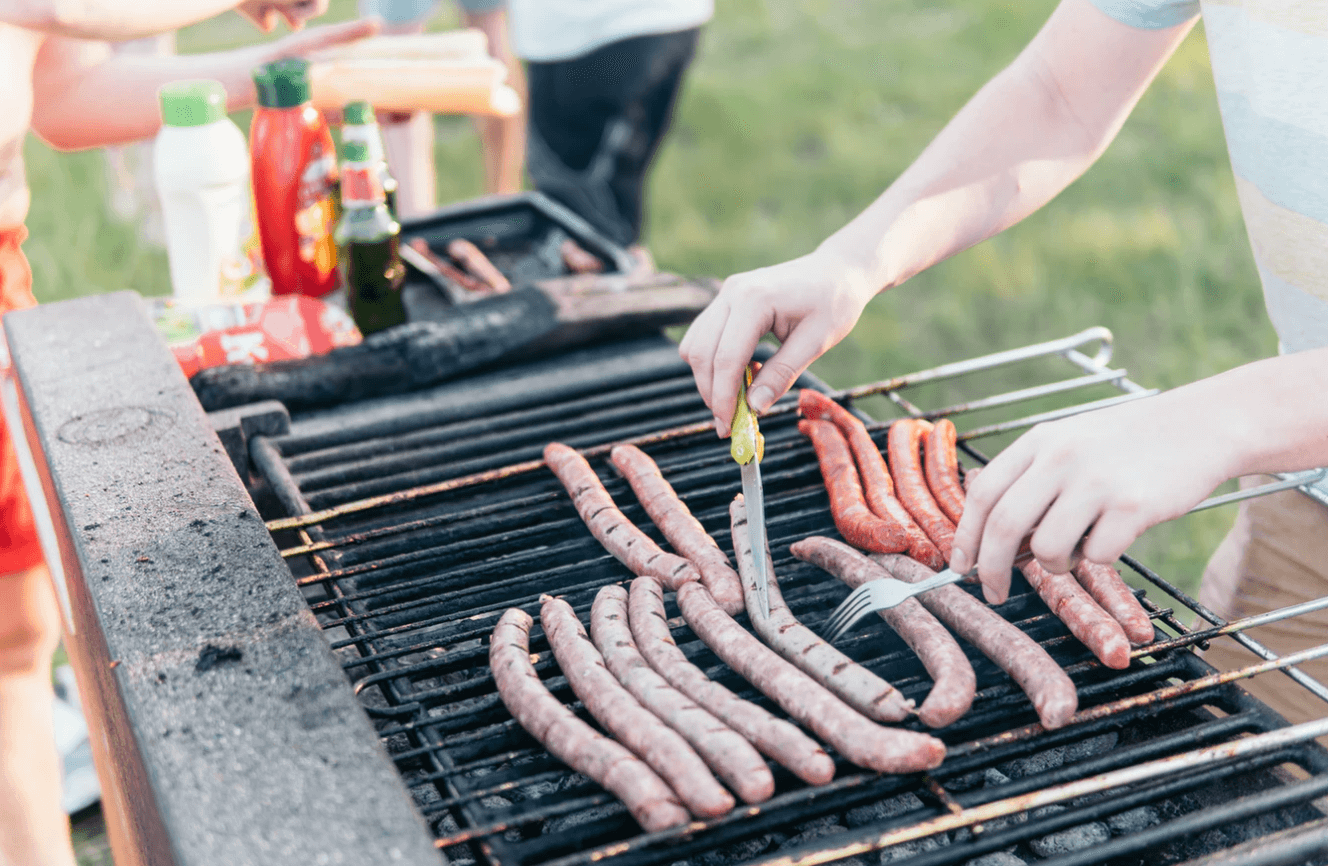
Charcoal grills are also one of the most widely used types of grills. They differ from gas grills in how the heat is fueled. With a charcoal grill, you use charcoals bought from a store as the fuel source for your fire. You light the coals, and create a bed of heated coals which cook your food.
The process of lighting coals and managing the fire to a proper temperature is typically pretty time consuming. For pit masters who like to show a little tender love and care, this is a perfect way to spend a Saturday.
The best part is, the results of a properly meal cooked on a charcoal grill are fantastic. You can expect the classic smoky BBQ flavor many of us love from foods cooked on a charcoal grill.
Traditional Charcoal Grills
A traditional charcoal grill has the traditional barrel style design that is common amongst all types of grills. These grills are typically made from thick cast iron and have adjustable charcoal pans so that you can easily manage your fire. Food made in a well designed traditional charcoal grill is hard to beat!
Kettle Grills
Kettle charcoal grills are typically much smaller in size and grilling surface area than a traditional charcoal grill. They get their name from their distinctive kettle shaped build. They’re usually lightweight enough to take on the go for camping trips or tailgating, and are a great option if you’re looking for that traditional smoky BBQ flavor.
Charcoal Grills Pros and Cons
Pros:
- The go to option if you want extra flavor for your food. Charcoal grills are a great option for experienced grillers or those who don’t mind investing time into managing your fire.
- Some models, kettle grills in particular, are extremely lightweight and perfect to take tailgating or camping.
- Generally speaking, charcoal grills are cheaper compared to other types of grills. That being said, it’s important to buy a charcoal grill that’s well made, even if it’s a few extra bucks. The last thing you want is a poorly made grill that isn’t sealed properly and doesn’t retain heat.
- You can experiment with different types of wood chips for different flavor profiles on your grilled food.
Cons:
- Fire management takes some time investment. Heating charcoals to the proper temperature can take about 30 minutes. You also have to spend time cleaning ashes and putting out your fire after you’re done cooking.
- It’s especially hard to maintain consistent temperatures in cold or windy weather.
- Fuel (i.e. charcoal) to cook costs more than natural gas or propane.
Charcoal Grill Recommendation for Beginners
Pellet Grills
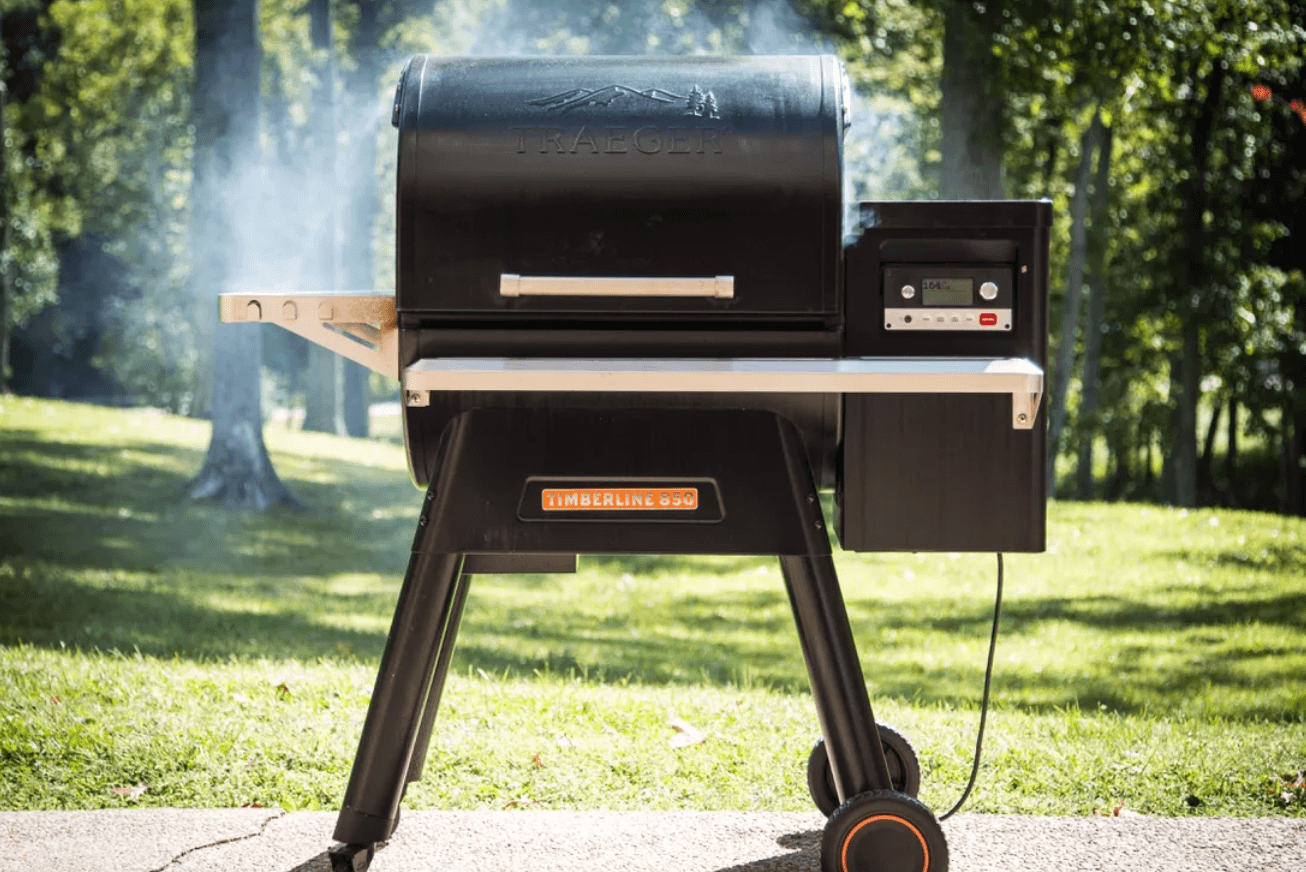
Pellet grills are a class of grill that are fueled by little flavored wood pellets. So, pellet grills are technically wood fire grills – and the results of your grilled food will show it with delicious flavor. Wood pellets come in a bunch of different flavors; Hickory, Maple, Cherry, Apple, Mesquite, and Pecan are all popular wood pellet flavors used for pellet grills.
From my observation, pellet grills are also one of the most technologically advanced types of grills. Many of the top brands of pellet grills (like Rec Tec, Traeger, or Camp Chef) are loaded with features that make grilling delicious food incredibly easy.
You can manage every aspect of your grill from a phone application – which comes in super handy for long low and slow cooking BBQ.
Pellet grills combine the best of many worlds – they’re convenient, provide smokey flavor to your food, and they’re definitely a set it-and-forget it style of cooker. Plus, you can make everything from a seared steak to a BBQ brisket on a pellet smoker.
It cuts both ways though. While pellet grills have all of these great qualities, they are also high maintenance. You need to regularly clean sawdust out of your cooking chamber (ideally every 3-5 cooks), and you need to ensure that grease isn’t building up moreso than other grill types.
Pellet Grills Pros and Cons
Pros:
- Many pellet grills are loaded with technological features that allow you to highly customize and control the way you grill.
- Your food will have delicious smoky flavor from grilling with wood pellets. There are also many different flavors of pellets so you can experiment with different blends and combinations.
- Pellet grills are incredibly versatile, and bona fide smoker grill combos. Most have temperature ranges from 200-500 degrees so you can smoke, grill, bake, or sear steaks on your pellet grill.
- Clean up is made easy by built in ash trays and management systems.
Cons:
- Ongoing costs can be more expensive due to the need to replenish your supply of wood pellets.
- If your pellet grill doesn’t have a big hopper, you may need to refill it during a long smoking session.
- Pellet grills require an electric connection.
- Prices tend to be on the medium to high end for a quality pellet grill.
- Pellet smokers are high maintenance – you have to clean them frequently to keep them running in prime condition.
Pellet Grill Recommendation for Beginners
Z Grills' flagship grill is also some of the best bang for the buck in the world of pellet grills. Features 697 sq. in. of cooking surface area and a 20 lb pellet hopper.
Kamado Grills
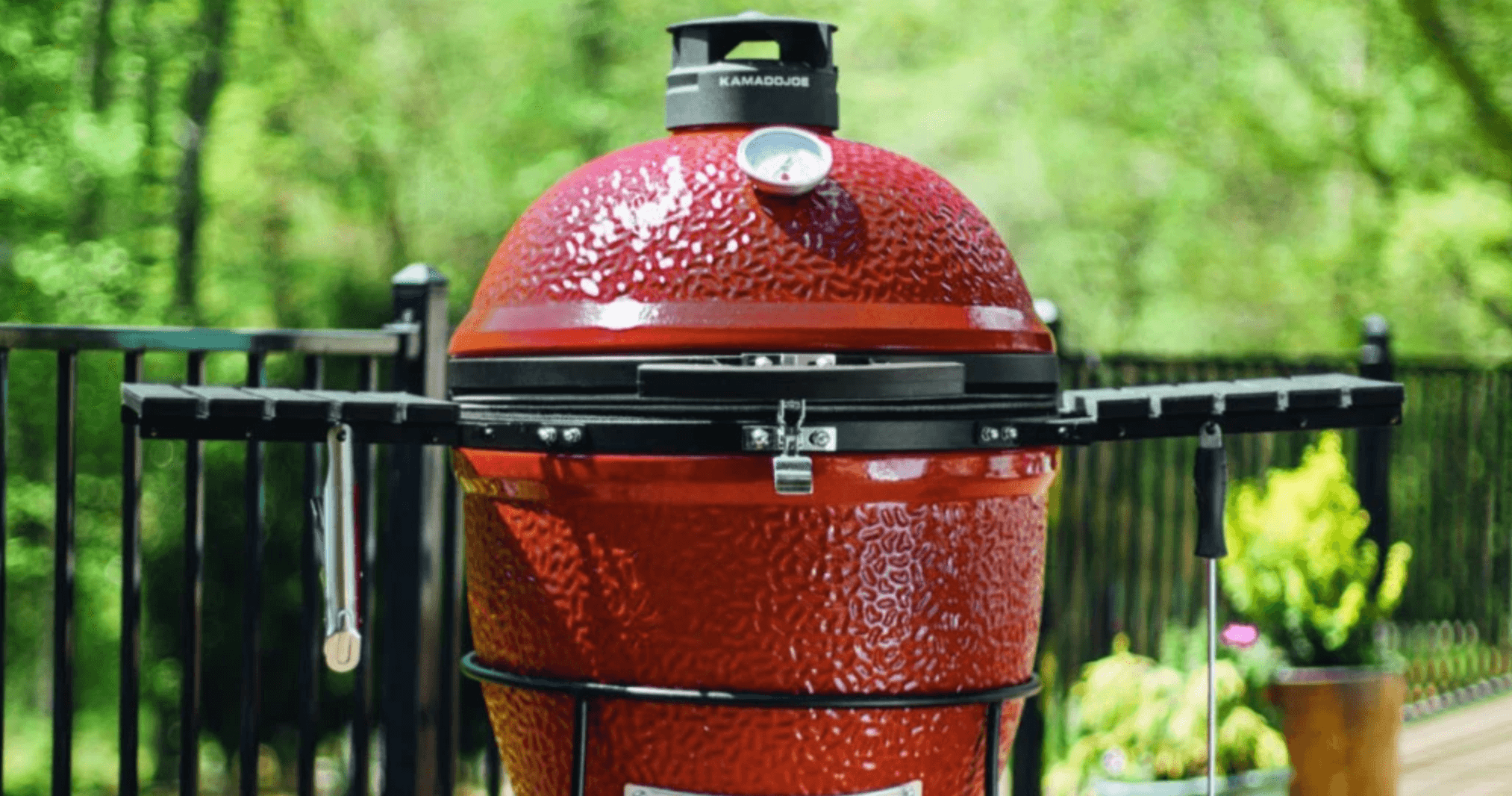
Kamado Grills are technically charcoal grills, but we feel like they’re deserving of their own class when it comes to types of grills. The Kamado grill has exploded in popularity in recent years in the United States.
It’s a ceramic grill which conceptually originated in China over 3000 years ago in the form of clay pots. Technology improvements have taken us from there to the modern day Kamado grill, which is a personal favorite and is capable of making incredible food.
Lumpwood charcoal is the fuel of choice for Kamado grills, and they deliver a truly delicious, smoky flavor to your food.
Ceramic Kamado Grills
The most common material used in construction of Kamado grills is ceramics. A high fire ceramic grill will almost never crack or fault. The ceramic material is also spectacular for heat retention, so ceramic grills are perfect for cooking pizza as it’s common for temperatures upwards of 750 degrees Fahrenheit to be achieved. Due to built in airflow systems, airflow can be controlled to bake or roast foods as well.
Stainless Steel/Cast Aluminum Kamado Grills
Some Kamado grills feature a stainless steel bowl inside of the unit to hold the charcoal. There’s also some kamado grills that have a stainless steel or cast aluminum exterior shell. The main difference in stainless steel vs ceramic comes in heat retention and weight.
Stainless steel kamado grills will be less heavy, and also won’t insulate quite as well as a ceramic grill. That’s not to say you can’t turn the heat up on a stainless steel, you just probably won’t achieve 750 degree Fahrenheit temperatures like a ceramic grill would.
Kamado Grills Pros and Cons
Pros:
- You can cook and BBQ food for long periods of time without having to constantly manage the fire.
- Flavor wise, you won’t find cookers that make tastier food than a proper kamado grill.
- Construction materials and design lean on 3000 years worth of technology for optimal grilling capabilities.
- Ceramic Kamado grills can reach temperatures of 750 degrees Fahrenheit.
- Multi-functional – probably the best grill for making pizzas. Also perfect for smoking, roasting, baking, searing, or grilling.
Cons:
- Kamado grills – especially ceramic ones – are pretty expensive. View these grills as a long term investment.
- They weigh quite a bit so they aren’t easy to move around. Plan on hunkering a Kamado grill down in one spot.
- Probably not the best choice for those new to grilling – mostly because of the price and because they have a learning curve
Kamado Grill Recommendation
With multiple cooking racks, an abundance of accessories, and an easy-lift lid, the Kamado Joe Classic III has everything you love to see in a ceramic grill.
Kamado Grills – Additional Reads:
Electric Grills
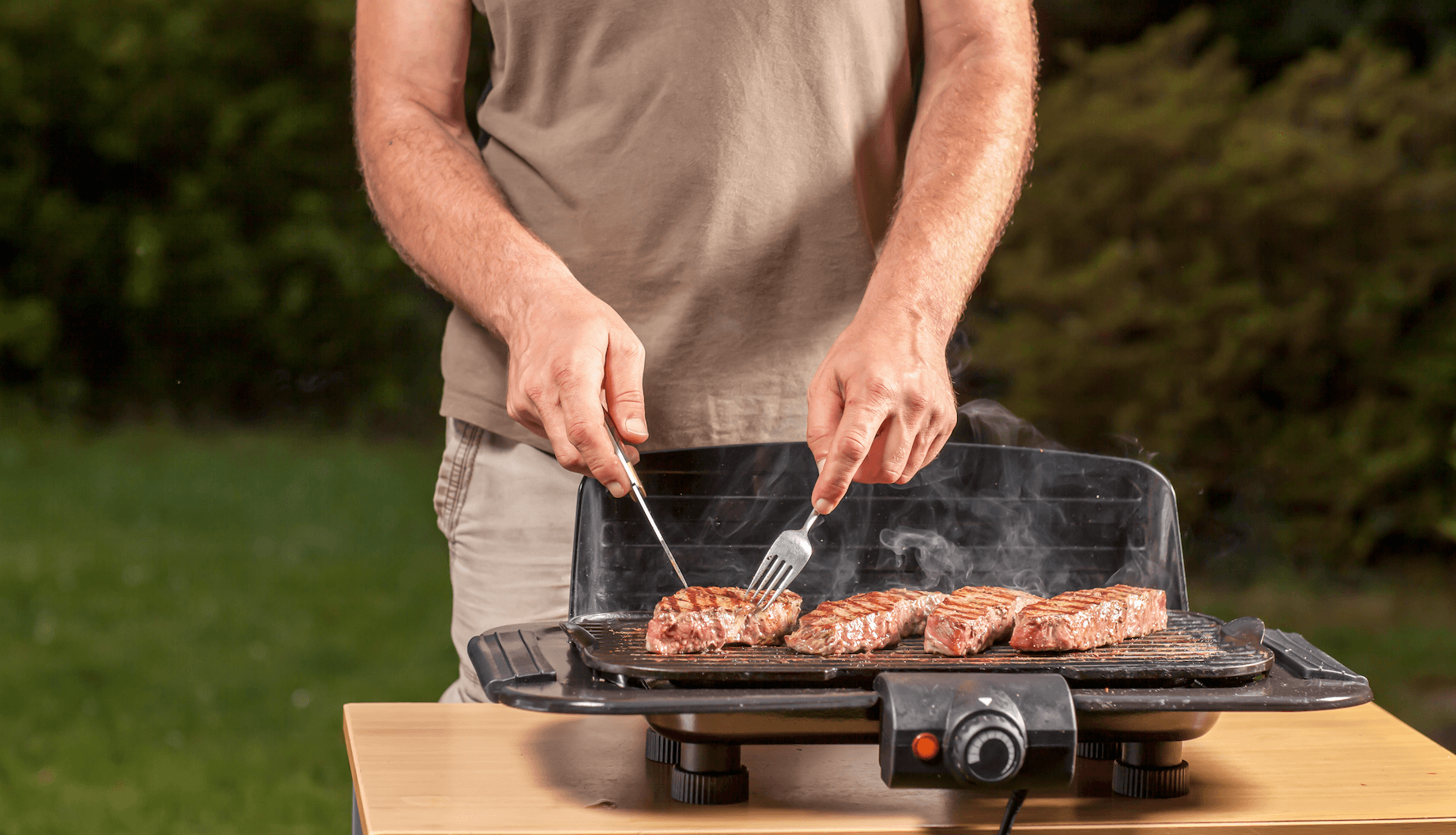
As you’d expect by the name, electric grills are powered by traditional power outlets and are designed for use indoors. It’s possible to use an electric grill indoors due to the absence of smoke.
*Important note* DO NOT use a grill, electric or otherwise, indoors if the grill emits any kind of smoke. Smoke/open fires indoors are dangerous and at a minimum could cause smoke damage to your walls. There are units designed that are smokeless grills specifically made for indoor use.
Electric grills are typically small in size and are designed for countertop use. If you’re looking for a simple way to grill some food quickly, an electric grill is a great option.
Electric Grills Pros and Cons
Pros:
- Plug and play – simply find a power outlet, plug the grill in, and get cooking!
- Designed for use indoors, which is super convenient. Great for apartment use.
- Clean up and maintenance is extremely easy.
- Ongoing fuel costs are almost nil.
- Prices for electric grills are generally pretty cheap.
Cons:
- Electric grills often don’t have a ton of cooking space – you won’t be able to grill for a large gathering or family reunion.
- You must have a traditional electric outlet nearby – so it’s hard to take an electric grill on the go.
- You don’t get the traditional smoky BBQ flavor from an electric grill.
Electric Grill Recommendation for Beginners
Portable Grills
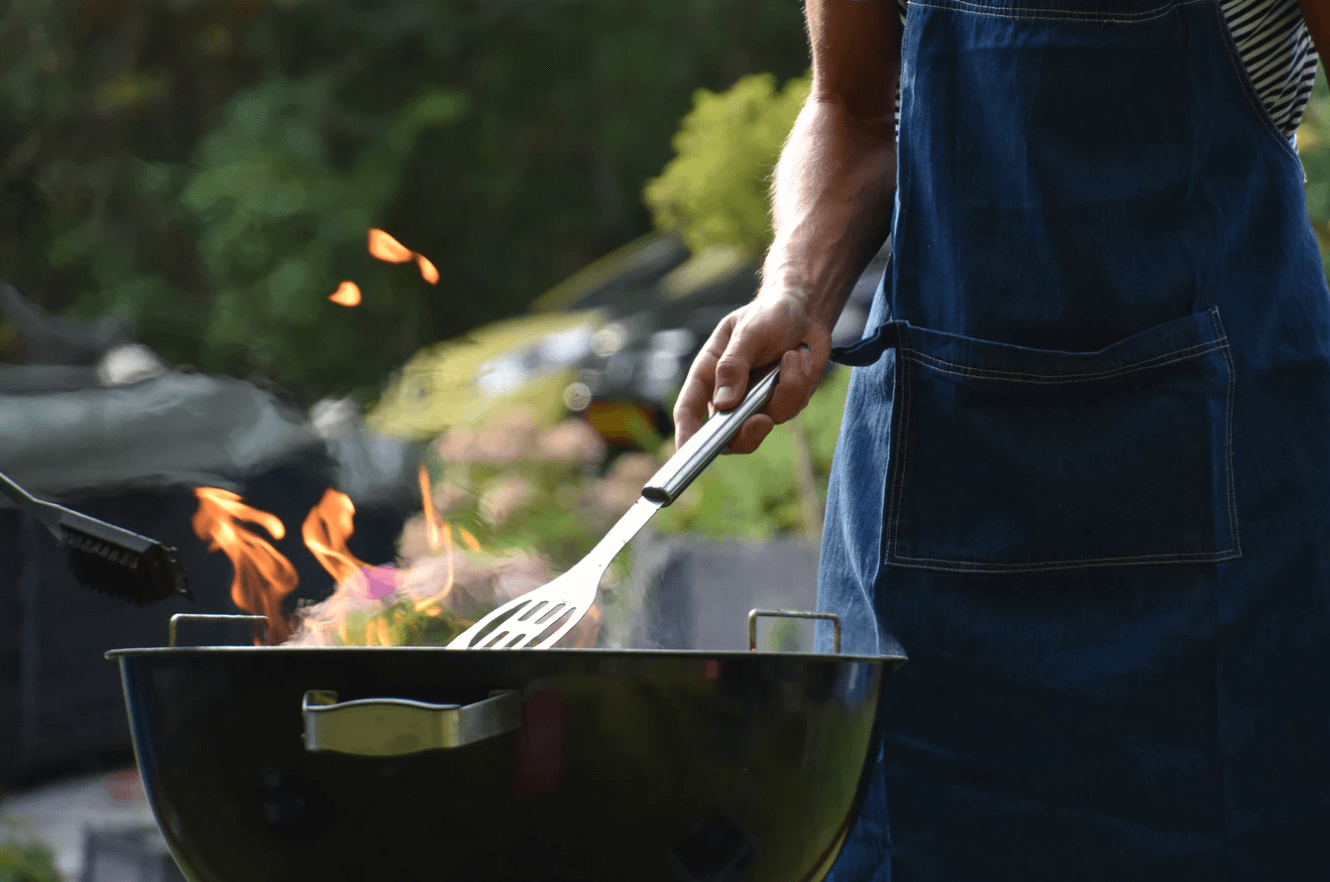
Portable grills are a sub class of grill that could technically also fall into some of the other categories on this list. So whether it’s powered by propane or charcoal, a portable grill is one that you can take with you on the go. It’s the perfect way to grill delicious food camping, tailgating, or wherever else your travels might take you.
Portable Grills Pros and Cons
Pros:
- Great for tailgating or camping, you can have delicious grilled food on the go.
- Can be used at home too. They’re typically small in size so they won’t take up a ton of space on your patio or deck.
- Since portable grills are typically smaller, they run on the lower end of the price spectrum. You can find a very cost efficient portable grill.
Cons:
- What you gain in portability you sacrifice in cooking area. Portable grills typically aren’t the best option for large cookouts or gatherings.
- Be careful to purchase a grill that’s well made from a reputable brand. Some bad manufacturers cut corners, especially on the cheaper portable grills.
Portable Grills – Additional Reads:
Frequently Asked Questions
How Many Types of Grills Are There?
There are four main types of grills when it comes to fuel type, which are gas, charcoal, pellet, and electric grills, and we are going to tell you about each of them below in a little more detail.
Gas Fueled Grills
This is one of the most popular types of grills, and it is well-loved for its high levels of convenience. Gas grills are able to ignite with the push of a button, and they can heat up and cool down quite quickly. They typically feature temperature control knobs, which allows the user to have complete control over the temperatures that they are using to cook.
The majority of gas grills will have more than one burner, which allows you to create multiple cooking zones, so you can get everything cooked at once, rather than one at a time. They don’t get as hot as charcoal grills, but they do usually peak within the 400 °F to 600 °F range. Natural gas grills will have an unlimited fuel supply, but they do require you to instal a natural gas line from your grill to your home.
Charcoal Fueled Grills
Charcoal is able to deliver impressive levels of heat, up to 700 °F. They also create a mouthwatering char-grilled flavor with everything that you cook on them, and they are usually the least expensive grill option. They can either be used to grill directly over the coals, or indirectly if you move the coal over to one side, which allows you to cook foods slower.
The main downside to using a charcoal grill is that you will need to use briquettes or lump charcoal for fuel, which can be difficult to light at times, especially if you have never used this type of grill before.
There also aren’t any temperature control knobs, which means that temperature regulation will take much more technique than gas grilling. They also take longer to heat up and cool down due to their excellent levels of heat retention.
Wood Pellet Fueled Grills
Wood pellet grills are becoming more and more popular, and they use hardwood pellets as their main source of heat. They also offer a combination of desirable features from both gas and charcoal grill styles. Pellet girls are powered by electricity, which is very convenient, and they can also be ignited by a simple switch.
Pellet grills will have user-friendly knobs and variable temperature settings, and they can be ignited by a power switch. They also provide your food with an irresistible hardwood smoked flavor. The only downside is that they aren’t as widely available, and they are often more on the expensive side than other grilling options.
Electric Powered Grills
Electric grills are the highest on the list when it comes to convenience and user-friendly features. However, they will not get as hot as other grill options, and you won’t get any of the delicious char grilled or smoked flavoring. Although, they do plug in, which is really convenient, and they heat up very quickly, so you can get started almost straight away.
Electric grills do not need any fuel, and they are really easy to use. One of the best things about them is that they are easy to clean, and their small size makes them great for places with limited space.
What is the Healthiest Type of Grill?
Eating healthy on the grill is totally possible!
The healthiest type of grill is a gas grill, and this is because the fuel will burn cleanly and without any volatile organic compounds contaminating your food. They don’t produce smoke or soot, which means that your food will be healthier in comparison to other cooking methods.
You can also use a cooking grid with this type of grill to allow fats to render and drip away from the food, reducing the number of calories and boosting the overall flavor.
What is the Easiest Grill to Use?
The easiest type of grill to use is either a gas grill, pellet grill, or electric grill. Each of these grill types are incredibly easy to heat up and are also simple to clean once you’re done cooking. Better yet, they all make spectacular food even with the ease of use factor!
What is the Best Grill for Steaks?
Charcoal or wood-fired grills are typically the best types of grills to use for grilling steaks, which is due to the additional flavor and charring that they are able to provide. A charcoal grill also gives you the option to add different types of wood to the fire to change and improve the smokiness and enhance the overall flavor of the meat.
What is the Most Versatile Grill?
Pellet grills are super versatile, and most of them will have temperature ranges from 200-500 degrees, which allows you to smoke, grill, bake, or sear on your pellet grill. Kamado grills are equally as versatile but require more work to build your fire.
Which Grills Last the Longest?
The grills that typically last the longest are those that are made from powder-coated steel or high quality stainless steel, as these will be the most durable and resistant to corrosion. However, heavier-duty stainless steel is also a great option as it will last for a very long time.
Choosing the right grill will involve considering the quality, features, style, and price of the product that you are looking at. Using a stainless steel grill will ensure that your grill will be resistant to corrosion, and the grill will not be easily scratched, dented, or damaged. When it has been covered, it can last for many years.
Types of Grills – Wrap Up
Be sure to think about all of the things that you want out of your grill. Looking for that traditional smoky BBQ flavor? A charcoal, Kamado, or pellet grill is probably the way to go. Convenience more important to you? A gas, electric, or portable grill may be a better fit.
In any case, I hope this rundown of the types of grills out there has been helpful to you! Did you end up purchasing one? Which one did you get? Let us know in the comments section below.
The post What Are the Different Types of Grills? [& Guide To All Types] appeared first on Own The Grill.
]]>The post Best Charcoal Grill Under $200 – Make Delicious Food On a Budget! appeared first on Own The Grill.
]]>Simply put, properly cooked food from charcoal grills beats the flavor from food from other types of grills any day of the week.
So, if you’re like me and love the methodical process of getting that perfect heat off of the coals, a charcoal grill is the way to go. These grills come in many different types and price ranges, but the truth is you can get one for a very reasonable price.
In this post, we’ll go over our picks for the best charcoal grills under $200. For a couple hundred bucks, you can be well on your way to grilling delicious food.
In a Hurry? Here’s Our Top Picks
Why Grill With Charcoal?
We already touched on this a little bit, but the flavors you can create off of a charcoal grill is second to none. The white-hot heat of charcoal will perfectly sear meats like steak quickly, leaving that ideal caramelized, crispy exterior.
Additionally, when your meat cooks it will drip fat, oils, and sugars all over the piping hot coals. When this happens, the drippings vaporize and rise back up as smoke to coat and absorb in the meat.
It’s a beautiful process that adds depth of flavor to your food. The flavor profile gains earthy and smoky notes that take most cuts of meat to the next level.
Best Charcoal Grills Under $200 – Our Reviews
Here’s the thing: most charcoal grills are somewhat basic in design. There are of course exceptions to this rule but for the most part, if you buy a grill with a proper shape and optimal air flow you’ll be in business.
And to be honest, many of us don’t have the budget to drop a few thousand dollars on a premium charcoal grill.
So with that in mind, we felt like $200 was a nice threshold where you can get a solid grill while remaining just under that price point. Let’s get into our choices!
Weber Original Kettle Premium Charcoal Grill
One of the best affordable charcoal grills is without a doubt the Weber Original Kettle Premium Charcoal Grill, for a plethora of reasons. With 363 square inches of cooking space, every single feature of this unit is designed to maximize your ability to grill perfect meats.
Most notably, the Weber Kettle comes with an incredibly easy to use one touch cleaning system. Often times, the biggest hassle with charcoal grills is cleaning up the ashes after you are done. There’s no problem with that here. A high-capacity ash catcher is built in that collects and makes disposing ashes super simple.
For temperature control, there’s a built-in lid thermometer and the lid itself is porcelain enamored. This means that the lit will help quite a bit to retain the heat generated by your coals. There are also adjustable dampers to control oxygen flow and temperature.
Additionally, the cooking surface grate has a hinge which allows you to easily add charcoal while grilling. This is a huge convenience and lets you have complete control over your grill.
You can easily move the unit around on a pair of durable wheels, and also store a couple of utilities on built in hooks for easy access and organization of your cooking space.
Pros:
- Adjustable dampers for oxygen flow allow for maximum control
- Hinging grate lets you add coals during your cook
- Ash catcher and 1 touch cleaning system
- Built in lid thermometer
- Hooks help with storage and organization
Cons:
- Lacks premium features, but that is to be expected at this price point
Weber Original Kettle 22-Inch Charcoal Grill
The Weber Original Kettle is very similar to their 22-inch premium charcoal grill, with a few less features. The tradeoff though, is that this model comes at a significantly discounted price.
What’s the difference between the Original Kettle 22 Inch Charcoal Grill and the Original Kettle Premium? There are three major differences. First, the non-premium model does not have a hinging grate for easily adding coals after your cook has already begun. You can still add them, it’s just not quite as easy.
Second, the ash collection tray isn’t quite as nice on the non-premium iteration. The tray is basically just an open bowl. It gets the job done for sure, but it’s not ideal for a windy day where gusts could blow ashes over your porch or patio.
Finally, there aren’t any utility hooks on this model.
Aside from those minor differences, this unit is every bit as good as Weber’s premium charcoal grill. You can still control oxygen flow with adjustable dampers, and the lid is designed for heat retention. This grill is designed to get smoking hot and give you ultimate control over how you cook your food.
Pros:
- Adjustable dampers for oxygen flow allow for maximum control
- Ash catcher and 1 touch cleaning system
- Built in lid thermometer
- Wheels make transporting the grill super easy
- Weighs only 33 pounds
Cons:
- Ash catching system could be better
- No utility hooks
Char-Griller AKORN Jr. Portable Kamado Charcoal Grill
You may have heard of kamado grills before – Big Green Egg is one of the most common household names in the world of grilling. What you may not have known is that kamado grills are fueled by charcoal!
This specialty type of grill tends to be very heavy and quite expensive, mostly due to the high quality ceramic material that’s used to construct the egg shape of the cooking chamber.
However, not all kamado style grills are made of ceramic. Some are made of materials like stainless steel or cast aluminum.
In the case of the Char-Griller Akorn Jr., the shell of the grill is made of powder coated steel and the circular cooking grate is made of cast iron.
The egg shaped design functions very similarly to the top brands of kamado grills, and at only 33 pounds, the Akorn Jr. can easily be taken on-the-go.
On the cooking surface front, there is enough space to cook 8 medium sized burgers at once, so even though this is a portable grill, it can be reasonably used on a nightly basis for regular at home grilled dinners!
Pros:
- Egg shaped cooker does an excellent job of trapping smoke and moisture
- Can fit up to 8 burgers at once
- Lightweight and easy to maneuver around
- Powder coated steel shell and cast iron grate
Cons:
- Has difficulty maintaining the scorching hot (500ºF+) temperatures ceramic kamados can maintain
Royal Gourmet BBQ Charcoal Grill and Offset Smoker
- 811 Square Inches: Includes 443 sq. in. porcelain-enameled steel wire cooking grates, 184 sq. in. chrome-plated warming rack and 184 sq. in. offset smoker.
- Tasty Smoke Flavors: The offset smoker is firmly attached to grill to ensure good circulation of heat and smoke. Easy to open side door to add charcoal and remove ashes; air vent stokes fire instantly.
- Adjustable Pan: 2-level height-adjustable charcoal pan creates better heat control and holds up to 4.4 lbs. of coal.
- Temperature Monitor: Lid-mounted thermometer gauge helps check and monitor the cooking temperature and you can cook with great confidence.
- Ample Space: Front and side tables offer workspace for seasonings and grilling tools. The bottom shelf provides extra storage space and holds up to only 20 lb. accessories when they are evenly distributed.
It’s easy to assume that you’re going to have to settle for a bare bones grill when shopping at the lower end of the price spectrum. That’s definitely not the case when it comes to the Royal Gourmet BBQ Offset Smoker. This charcoal grill can handle all of your basic grilling needs and has the versatility to be a dual style barbecue.
It’s also a great option if you are the type of master griller who cooks for big groups of people or parties. There’s a whopping 800 square inches of total cooking surface. 438 of those are the main cooking area, 183 are comprised of the side box, and finally there’s a swing away warming rack with 179.
This is a perfect unit for slow cook BBQ brisket, chicken, and ribs. The large main chamber lets you load up the coals and wood chips for the best flavoring. When it’s time to clean up, there are built in ash pans that allow you to dump ashes in the trash easily.
At only 4 feet tall, and considering all of the cooking surface, the Royal Gourmet is a great option for camping or tailgating. The unit itself weighs about 55 pounds so you might need some help lugging it around if you can’t roll it.
Pros:
- Generous amount of cooking surface area
- Offset smoker adds versatility as a combination grill/smoker
- Temperature gauge and scald-proof handle built in
- Excellent price point considering all of the included features
- Great for camping and tailgating
Cons:
- Some customers have complained that their units don’t hold temperature well. This is likely a faulty parts issue that should be covered by a manufacturer’s warranty. If this happens it’s a hassle to deal with.
Char-Griller Patio Pro Charcoal Grill
If you’re looking for a charcoal grill under $200 that can fit into a tight space, the Char-Griller E1515 Patio Pro is really hard to beat. As the namesake suggests, it can fit into a tight patio space and is a nice option for apartments or small spaces.
The tradeoff is that there’s only 250 square inches of cooking space. That’s not as much as some of the other grills on this list, but it’s plenty of space to handle the needs of 4-6 people. For reference, you could fit 6 to 8 regular sized burgers on a space that big.
One side of the grill is a drawer that slides out for your coals. It’s a super convenient and easy way to manage your fuel. The other side of the grill has a shelf to help you organize during your cook.
Adjustable dampers allow you to control oxygen flow and by extension, how hot your coals get. The ash pan is removable so it’s super easy to clean up after you’re done.
Pros:
- The placement of shelves and drawers are extremely intuitive
- Ash catcher works great and makes cleanup easy
- Adjustable dampers for airflow management
- Perfect for small decks or patios
- Built in wheels are durable and easy to use
Cons:
- Small cooking surface
Char-Griller Table Top Grill
If you aren’t necessarily in need of a full-sized grill, the Char Griller Table Top is an incredibly versatile option and worthy of a place on our list. Even though it weighs about 40 pounds, it’s actually quite easy to transport relative to that weight. Mostly because the dimensions of the entire grill are 18.5″ x 17″ x 16″.
This unit will actually attach to other Char-Griller units to serve as a horizontal Texas style smoker, but it works great as a stand-alone table top grill.
It features 250 square inches of primary cooking area, which is plenty of room to cook for about 6 people. You really can get just about anything done with this small profile tabletop grill.
As you’d expect from quality charcoal grills, there’s a removable ash tray for easy clean up. A sliding drawer makes coal management a breeze too.
Pros:
- Small profile makes it very easy to transport
- Versatile; great for camping and works as a compliment to larger grills.
- Sliding drawer for easy coal management
- Cast iron cooking grates and heavy-duty steel construction
- Removable ash pan for easy cleanup
Cons:
- Only 250 square inches of cooking surface area
Weber Go Anywhere Portable Charcoal Grill
If you’re looking specifically for a portable grill that uses charcoal, the Weber Go Anywhere is a great choice to take your BBQ on the go.
Whether it’s a camping trip or a tailgate, the Go Anywhere is easy to pack up in the back of your car at only 15 pounds. Provided you’ve cleaned your grill out properly, it couldn’t be easier to move this thing around.
It comes with 160 sq. in. of cooking surface area, which admittedly isn’t particularly large, but it’s enough to fit 4 to 6 burgers at a time for a tasty on the go meal.
The shell of the grill is made of Weber’s signature porcelain enameled lid and base, which do an excellent job of retaining heat and distributing heat evenly throughout the grill.
Pros:
- At only 15 lbs, it is the ultimate on-the-go charcoal grill
- Easy to clean
- Lid and base are made with durable porcelain enameled material
- Ideal for camping and adventuring
- Excellent price point
Cons:
- The smallest cooking surface area of any grill on this list
Choosing Charcoal Grills Under $200
At Own The Grill, we believe that well cooked food brings people together like nothing else. We take the buying process for grills seriously, and we believe everybody else should too! Here are a few things to keep in mind while you shop
Quality of Build
If you’re searching for a grill under $200, that means you’re on a budget. Just like anything else, it’s easy to get wide eyed at all of the features of super expensive grills. But at the end of the day, you can make outstanding food on a budget friendly grill.
Most importantly, the build quality needs to be high. That means a design that retains heat, allows for simple charcoal management, and bonus points for a solid ash removal system. If the grill you purchase has those things, you’re going to be in business.
Cooking Area and Grill Size
Cooking area frankly is an important factor for any type of grill. How many people are you grilling for? Which cuts of meat are you going to try to cook?
250 square inches of cooking area will get the job done for a family of four 99% of the time. If you plan on cooking for larger groups of people, make sure you get something that has enough grill grate area.
On a similar note, consider how much space you have for your grill. Also think about the setting you plan to grill in. Are you buying for a small patio? A large outdoor kitchen? Or do you need something transportable for camping trips and tailgating?
Temperature Control
For beginners, we always recommend grills that have as many temperature control features as possible to make things easier. Even for intermediate to advanced grill masters, these features can help you a tremendous amount.
Things like built in temperature gauges, sliding charcoal trays, and adjustable dampers for oxygen flow management can be the difference in taming the flame or losing control of your cook.
Ease of Use
Grilling to us is part art and part science. To unlock the mastery within, you don’t want to have to devote focus and time to things that aren’t that important. That’s why it’s important to think about the ease of use of your grill. Is it intuitively designed? Will the storage features and trays help you stay organized?
Cleaning and Upkeep
It goes without saying, but one of the least appealing components of charcoal grilling is process of putting out your coals and cleaning up. All of the coal and wood that loads up your food with flavor eventually turns to ash, and it’s irresponsible to not clean it out of the bottom of your grill.
While it’s no fun, the process can be made much easier if the grill has been designed properly. Most grills under $200 will have some form of easy clean features. At a minimum, there should be a removable ash tray.
Portability
Typically speaking, affordable charcoal grills tend to be quite portable since they aren’t huge hunking pieces of equipment.
Either way, you should consider whether or not you need a portable grill, or if you’d prefer something that is designed to remain in place for an extended period of time.
Most of the time, you should be looking for 30 pounds or less if you plan to bring your grill with you when you travel. Any more than that starts to become a hassle to transport.
Warranty Length
Unfortunately, many manufacturers of cheap grills out there don’t back their products with warranties.
With that being said, it’s definitely possible to find a grill under the $200 price point that has a reasonable warranty coverage period.
Well respected brands like Weber will have a warranty of 3 or more years – that way you’re covered if you happen to get shipped a grill that has some issues.
Frequently Asked Questions
When it comes to choosing a grill, there are countless questions to be asked! We’ve rounded up answers to some of the most common questions about charcoal grills here.
What’s the Best Kamado Grill Under $200
Kamado charcoal grills utilize centuries old technology are highly recommended for outdoor cooking. These grills are very flexible, and cooks in nearly every manner that one could want.
It’s often an expensive product that costs more than $1,000 – but this does not mean you can buy good quality kamado for a couple hundred bucks.
For our taste, the Char-Griller Akorn Jr. is the way to go when it comes to affordable kamado grills. You get that wonderful smokey flavor on your food in a quality cooker that will last you for years.
What Is Charcoal?
Charcoal is a substance that is created by burning wood at extremely high temperatures. This process removes moisture and harsh components from the wood.
After the charcoal is created, it’s relatively lightweight and able to be used to start fires and for our purposes, heating your grill grate!
There are two main types of charcoal used for grilling – lump charcoal and charcoal briquettes. Generally speaking, briquettes are more affordable and the most popular type of coal. Lump charcoal is created using more natural processes and is more expensive and a little harder to come by.
Are Charcoal Grills Easy To Use?
Compared to gas grills, charcoal grills require a little bit more work to operate.
The reason mainly comes down to managing your charcoal fire. First, you need to light your coals! After that, you need to monitor your grill to make sure it holds it’s temperature.
Most people get the hang of maintaining their grill’s temperature after a handful of cooks, so that part is pretty easy with some experience.
Also, tools like a charcoal chimney starter make lighting your fire easy as well. With the right equipment and a little bit of experience, charcoal grills are not difficult to use.
How Hot Do Charcoal Grills Get?
The answer to this question is going to depend quite a bit on which particular grill you end up with.
Most grill manufacturers will let you now how low and how high of a temperature your grill can hold. Any good charcoal grill should be able to reach 400-450ºF at least on the high end.
That’s enough temperature to sear a steak or get a nice crust on some burgers, but ideally a grill should be able to get to 500ºF for optimal searing performance.
For reference, some of the ceramic kamado grills we discussed earlier can reach scorching temperatures up to 900ºF – which is enough heat to bake pizza Neapolitan style.
Do I Need To Cover My Grill?
We think it’s a good idea to cover your grill, no matter which type of grill you have on your back patio.
But when it comes to charcoal grilling, it’s especially important. This is because airflow is so important for a charcoal fire, and the condition of the grill itself affects the way air can properly flow through your cooker.
For example, you need your vents and dampers to be in good shape for air to efficiently access your coals and create smoke to flow through the grill.
Most covers you can find are inexpensive and worth the investment in the long run, especially if you’re placing your grill in a place where it can be exposed to elements like wind, rain, or snow.
Are Charcoal Grills Better Than Gas?
Better is a relative term, but it’s pretty widely agreed upon that charcoal grills produce more robust, classic flavors than gas grills.
So if we are purely looking at flavors produced, most would agree that charcoal grills are better than gas grills.
With that being said, charcoal grills don’t come without downsides. As mentioned before, you have to build and maintain a fire each time you cook, which may not be ideal if you plan to grill multiple times per week after work.
Also, the ongoing cost of a charcoal grill is more expensive than a gas grill – it’s cheaper to use natural gas or refill a propane tank than it is to constantly buy new bags of charcoal.
At the end of the day, the charcoal vs gas debate comes down to personal preference. Some people prefer the flavors and methodical nature of charcoal grilling, and others prefer the convenience of cooking with gas.
Final Thoughts
I hope this resource has been helpful to you in your search for the perfect grill! At the end of the day, great food doesn’t have to be expensive.
Charcoal grilling is a tried and true method of cooking food – and it’s not going away anytime soon. Even with a cheap grill and some technique, you can be well on your way to outstanding grilling.
The post Best Charcoal Grill Under $200 – Make Delicious Food On a Budget! appeared first on Own The Grill.
]]>The post Best Lump Charcoal [For Smoking and Grilling] appeared first on Own The Grill.
]]>As it turns out, lump charcoal is more than just an alternative to briquettes. Some people absolutely swear by it and compare using lump charcoal to going organic with your ingredients.
In a nutshell, lump charcoal is more natural and doesn’t contain any additives or lighter fluids like many briquettes do.
On top of that, lumpwood has its own distinct flavor that can greatly enhance your BBQ to deliver the sort of legendary results that your friends and family can’t stop talking about. It has a uniquely deep, woody, smoky flavor that you just can’t quite replicate with briquettes.
You’ve probably spent a decent amount of money on your charcoal or kamado grill, so now it’s time to do your grill justice by working with the best fuel possible.
In this post, we’ll go over our picks for the best lump charcoal you can buy, followed by some tips for how to use it along with answers to some frequently asked questions.
In a Rush? Here’s Our Top Picks:
- Jealous Devil All Natural Hardwood Lump Charcoal – Top Choice!
- Kamado Joe All Natural Argentinian Lump Charcoal
- Fogo Premium Oak All Natural Charcoal
- B&B Oak Lump Charcoal
- Cowboy 24220 Lump Charcoal
Best Lump Charcoal – Reviews
Jealous Devil All Natural Hardwood Lump Charcoal
- 100% natural - pure, dense South American hardwood blend
- Low ash and superior burn (max temperatures over 1,100ºF
- Waterproof & dustproof packaging with carry handle and zip top closure
When it comes to the best lump charcoal, it’s hard to not see the case for Jealous Devil All Natural Hardwood Lump Charcoal.
It’s made from a South American wood called “Quebracho Blanco” that’s insanely dense and is logged using sustainable methods. No fillers, chemicals, or scrap were added to the bag at any point in the process.
The great thing about the really dense wood is that it burns incredibly hot without any sparks or crackling like you might get with other woods. In fact, the maximum temperature of this wood can go north of a scorching 1170(!!) degrees Fahrenheit.
The density of Jealous Devil also lends it to burn for a long time. In an open grill, you can get around 4 hours of burn. In a more enclosed smoker, it’s not uncommon to see this lump charcoal burning for up to 20 hours.
The bag itself also has a couple of nice little design features that come in handy. Namely, it’s waterproof and dustproof and also resealable with a carrying handle on top.
Flavor wise, expect that traditional, deep smoky flavor to come off of Jealous Devil. You’ll have to experiment to get the perfect amount down, but for reference the flavor and intensity is akin to smoking with oak.
Things We Like:
- Has the ability to burn very hot and/or long depending on your needs
- No sparking, no popping, and low ash output
- Great flavor
- No chemicals, fillers, or scrap added
- Bag is resealable with a convenient carry handle
Things We Don’t:
- Because of the density, this lump charcoal can be challenging to light if you are using a traditional chimney starter
Kamado Joe KJ-Char Hardwood
- Made from a blend of hardwood - Guayacan, Guayaibi, Mistal, and White Quebracho
- Can burn for up to 18 hours
For those of you who might not be aware, Kamado Joe is one of the best kamado grill manufacturers on the planet. In particular the Kamado Joe Classic is a best seller year after year, and the Big Joe is a personal favorite of mine. When it comes to charcoal grilling, they really know their stuff.
As it turns out, they also make one of the best lump charcoal blends on the planet too! The Kamado Joe KJ-Char Hardwood Extra Large Lump Charcoal is a proprietary blend of South American Hardwoods that can burn extremely hot and long.
More specifically, Guayacan, Guayaibi, Mistal and Quebracho Blanco are the hardwoods of choice in this lump charcoal blend. We learned about Quebracho Blanco in the previous review, and the other woods used share a lot of characteristics. Namely they are pure, extremely dense hardwoods.
In the bag you’ll find all kinds of different sized pieces. Small pieces are included that light quickly and help to get the fire going. Pieces so large that they can burn for up to 18 hours and be reused 3 times are also included to provide heat and longevity. There are also plenty of pieces in between those two ends of the spectrum.
The flavor profile is a robust, deep wood-fired flavor that you’d expect from an award winning BBQ restaurant. All around, this one gets our vote for best lump charcoal for kamado grills.
Things We Like:
- Dense hardwoods burn incredibly hot and long
- No sparking, no popping, and low ash
- Robust, deep smoky flavor
- Nice mixture of small, medium, large, and extra large sized pieces
- Some large pieces can be reused if you shut your vents off in time after you’re done cooking
Things We Don’t:
- With so many different sized pieces, some being extremely large, it can be tough for beginners to get the hang of properly using this charcoal. After you get it down, the sky is the limit though
Fogo Premium All-Natural Hardwood Lump Charcoal
A worthy challenger to the title of best lump charcoal is the Fogo Premium Oak Restaurant All-Natural Lump Charcoal. They aren’t kidding when they describe this stuff as restaurant grade.
One attribute that makes Fogo Premium lump charcoal stand out is how fast it lights up. Relative to other lump charcoals, it lights up incredibly easy and quickly – allowing you to reach searing temperatures pretty fast.
The oak flavor is a great, all around versatile type of wood that will impart delicious flavor on all kinds of food.
Medium to large sized pieces are provided in the bag, which are ideal for long lasting, consistent fires. It’s an ideal lump charcoal for any kamado grill, kettle style grill, or drum shaped charcoal grill.
Things We Like:
- Lights easily and gets hot fast
- All natural oak hardwood provides fantastic traditional smoky flavor
- Medium and large pieces included
Things We Don’t:
- Occasionally you will get a piece so large that you need to break it with a hammer to get it to a usable size
B&B Charcoal Oak Lump Charcoal
If you’re looking for an easy to use, all around solid lump charcoal, the B&B Charcoal Oak Lump Charcoal is very much worth a look.
The nice part too, is that this bag comes at a very reasonable price point.
The oaky flavor profile is similar to what you’d get from smoking with oak wood. It’s a versatile flavor that works with just about any type of food.
As you’d expect, the contents of this bag are 100% natural with no additives or fillers. It burns hot, long, and clean – everything you want out of the best lump charcoal.
Things We Like:
- Good price point
- Oak hardwood has a versatile smoke flavor profile
- Burns long, hot, and clean – great for searing or smoking
Things We Don’t:
- These bags are prone to having too many small pieces and/or dust in them
- Coals are harder to light than some other brands
- A few customers have reported sparks and popping coming from the coals – not ideal
Big Green Egg Lump Charcoal
Big Green Egg is another brand name that you’ve likely heard of. They’re also one of the top manufacturers of kamado grills. Like Kamado Joe, they’ve taken the time to curate what they believe to be the best lump charcoal.
The BIG CP 20-Pound Bag Of Natural Lump Charcoal is a great choice for kamado grills and traditional charcoal grills alike.
As far as wood goes, their lump charcoal is comprised of a blend of hickory and American oak. It’s easy to light and burns hot and long. One thing to note, if you’ve ever smoked ribs using wood (or any other type of BBQ really) you’ll know that hickory is one of the strongest flavored smokes.
There’s nothing wrong with it at all. On the contrary, proper amounts of hickory yield delicious results. I just bring it up because if you aren’t careful with this lump charcoal blend and use too much, you could end up with bitter results.
All of that said, Big Green Egg undoubtedly makes one of the best lump charcoals on the market, and their bag is very much worth a try.
Things We Like:
- Coals are easy to light and burn long and hot
- All natural oak and hickory blend is as pure as it gets. No additives or chemicals
- Minimal ash produced from burning, which makes cleanup relatively easy
- Great taste when used in the proper amounts
Things We Don’t:
- Very expensive – a 20 pound bag costs more than most other brand’s 35 pound bags
- The inclusion of hickory makes it easier to overpower your food with smoke flavor.
Cowboy 24220 Lump Charcoal
If you’re looking for a budget choice, Cowboy 24220 Lump Charcoal is very much worth a look.
It’s a hickory and oak blend that leads to really nice tasting, traditional smoky BBQ flavor.
For those who grill with lump charcoal multiple times per week, your bank account might not like you very much if you’re constantly buying super expensive bags. On a per pound basis, Cowboy lump charcoal offers a really nice value.
The coals burn long and light quickly, which is all you’re really needing from a value pick like this.
Things We Like:
- Cheap price – your dollar goes a long way
- Oak and hickory blend imparts nice flavoring onto your food
Things We Don’t:
- Lots of customers report receiving bags with way too many small pieces and/or too much dust
Picking Out the Best Lump Charcoal
There are a few things you should definitely look out for when shopping for lump charcoal.
First, you should make sure the bag clearly states that it’s 100% all natural with no additives. Otherwise, you’re buying a knock off.
You also want a bag that has medium to large size hardwood lumps. It’s also ideal for the charcoal to be uniform in size. You want to steer clear of any brands that deliver bags with small pieces or dust at the bottom. If you buy multiple bags with this problem, you should definitely try a new brand.
When you pull your the best lump charcoal out of the bag, it should look like charred or burnt logs and branches. You might even see something that resembles a burnt piece of furniture – that’s ok! Some of this stuff is repurposed wood.
What you can’t have is dust or little tiny bits of wood that are any smaller than a credit card.
What is Lump Charcoal?
After all of this talk you might be wondering what exactly is lump charcoal and what makes it so special?
It’s made from natural hardwoods with high carbon. This hardwood is taken and burnt in an oxygen free environment until all impurities are gone and only coals remain. Visually, lump charcoal looks like burnt or charred wood logs.
Burning the wood in an oxygen free environment purifies it as any oils, moisture, chemicals, and other impurities vaporize out of the wood during the burning process.
This process is not as easy as it sounds, and many aspects of the process are manual and not the most efficient. It takes an especially long time and lots of effort to yield large pieces.
In fact, only about 16% of the initial volume of wood that begins the burning process ends up turning into the lump charcoal you’d find in a bag. In other words, it takes about 125 pounds of wood to fill a 20 pound bag of lump charcoal.
When it comes down to it, lumpwood charcoal is the most natural form of fuel you can use for grilling your food. There are no additives, chemicals, or fillers anywhere to be found, making it an all natural fuel that is perfect for at home and professional pit masters alike.
Lump Charcoal Pros and Cons
Simply put, here are a few benefits and drawbacks to using lump charcoal:
Pros:
- It’s is all natural, with no additives, fillers, or chemicals. This attribute translates to the quality of your food.
- It lights quickly, burns hot, and burns long. You spend less time messing with your fire and more time paying attention to the food you cook.
- The best lump charcoal is very reactive to oxygen, so you can easily control your temperature with a grill that has a good ventilation system. Lumpwood is the ideal fuel choice for kamado grills.
- There is little to no ash produced from lumpwood, so the cleanup process is pretty easy.
- Much of the wood used is repurposed, so in a small way you’re helping to put use to something that would otherwise be scrapped away.
Cons:
- Lump charcoal is more expensive than briquettes. Could be an issue if you grill multiple times per week.
- Bad manufacturers will sell bags with a high proportion of unusable small pieces or dust.
- Beginners might get overwhelmed by how hot the coals get. It’s not hard to manage your temperature, but you do need to pay attention and know what you’re doing.
Lump Charcoal vs Charcoal Briquettes
We’ve already touched on the fact that lump charcoal is more natural than briquettes, which are known to have additives and chemicals like lighter fluid added to them.
On top of that, lump charcoal actually lights faster and will produce hot coals in just minutes.
Lump charcoal also burns hotter and leaves less ash compared to briquettes. The hotter burn helps you get a better sear on your steak or a delicious crust on your burger. It’s by far the fuel source of choice compared to briquettes for searing steak, as some species of lump charcoal hardwood can reach temperatures near 12oo°F.
Last but not least, the best lump charcoal is better for temperature control. This is because it’s more reactive to oxygen, and therefore can be controlled and managed precisely by your grill’s adjustable vents. This makes lump charcoal particularly great for kamado grills, as the best one have highly adjustable air vent systems.
Read our full breakdown of lump charcoal vs briquettes here.
What Makes the Best Lump Charcoal?
High quality lump charcoal should always be 100% pure all natural hardwood that’s free of chemicals, additives, and fillers. The best lump charcoal bag will have little to no dust or small pieces in the bottom of the bag. On the contrary, it will be loaded with medium to large sized pieces that are ideal for burning long and hot with minimal ash.
Lighting a good charcoal should be hassle free. Personally I like to usefire starters for maximum convenience, but the best lump charcoal should also light easily with a chimney starter.
After you’ve lit your charcoal, it shouldn’t spark, crackle, or pop. That’s a sign that that either your wood is low quality or a poor job was done during the carbonization process.
Another aspect of a quality lump charcoal is its smell. The scent of lumpwood doesn’t necessarily directly translate to your food, but it should generally smell like smoky wood and BBQ. If you light your coals up and get chemical-like smells, something is probably wrong.
How Was It Sourced?
In this day and age, with the amount of resources we all have access to, there really isn’t a reason to buy sustainably sourced “things” – other than sheer laziness.
When it comes to lump charcoal, unfortunately there are manufacturers out there who import wood that was sourced by destroying rainforests.
For U.S. manufacturers (typically oak and hickory wood), this isn’t much of a problem because most use sustainable farms or scrap as their sources of wood.
You should be careful though with brands and importers from around the globe, particularly South America. If buying from an international brand, do your part and research to make sure the lumpwood charcoal was sourced with sustainable methods, and not illegally.
*Note* all of the choices on this best lump charcoal list are sustainably sourced.
Storage
One of the most overlooked aspects of using lump charcoal is storing it properly.
After all, it would kind of be a waste to buy an expensive lumpwood bag and potentially take away from the quality of it because you didn’t store it the right way.
Not storing your opened charcoal properly can lead to it absorbing moisture. That’s not great because moisture can make it not burn properly or worse, contract mold and definitely ruin your food.
You want your charcoal to remain extremely dry. It will last a very very long time if stored properly with this in mind.
The way to do this is simple – you just need to place any unused charcoal into a sealable container. That could be a plastic bin, a new bag, or if you’re lucky, the original bag your lumpwood came in will have a resealable top.
Does Size Matter?
As with many things in life, size makes a big difference.
Larger pieces will burn longer and hotter. Some really big pieces can actually be reused multiple times!
It’s important to pay attention to how big your lumps are. If you buy from a certain brand and they consistently deliver bags with small pieces and/or dust, it might be time to move on and try something else.
Dust and small pieces, in addition to not burning hot or long, will be prone to clogging your air vents and fire grates.
Which Types of Wood Make Lump Charcoal?
There are actually quite a few different types of wood that can make up a bag. In fact, many bags are blends of multiple woods.
What you’ll find across the board is that all of the woods used are hardwoods. Some woods are more predominant than other simply due to supply. That is, how many trees and scrap is there available to source for creating lump charcoal.
With that in mind, here is a short list of some of the most common woods used for lump charcoal:
USA:
- Alder
- Apple
- Cherry
- Chestnut
- Hickory
- Maple
- Oak
- Walnut
South America:
- Guayacan
- Guayaibi
- Mistal
- Quebracho Blanco
Honestly, it’s pretty rare to find a bag that’s truly 100% of the exact same wood. Blending is perfectly fine, but the best lump charcoal bag will be comprised of woods that all burn at a similar heat and rate.
Do Different Woods Have Different Flavors?
Yes, they do. I would say though that the differences in flavor are pretty inconsequential if you are cooking something quick, like a steak, burger, or some fish.
If you’re smoking on the other hand, that’s where the choice of wood might make a difference. Take a look at our post on the best wood for smoking ribs for some guidance on which woods produce which types of flavor.
Generally speaking, oak is a great starting point and provides a robust, traditional smoky BBQ flavor.
Can I Use Wood Logs or Chips With Lump Charcoal?
Absolutely! It’s very common for pit masters to use wood chips for extra flavoring.
It’s something that is completely subjective, so you should experiment with which flavors work the best for you and the foods you like to make!
Personally, I like to add fruitwoods like apple, peach, or cherry to my fire if I’m looking to add a sweeter note to the flavor of my BBQ.
Wrap Up
When it comes to smoking meats or using charcoal as a grill fuel source, the best lump charcoal is the way to go.
It’s all natural, burns hotter, burns longer, and the best ones are as consistent as they come. The quick light up and consistent burn means you can spend less time messing with your fire and more time grilling and smoking.
I hope this post has helped point you in the right direction for the best lump charcoal, and that it’s helped you a little bit on your journey to delicious brisket, ribs, chicken, or whatever else you’re whipping up for dinner! Let us know which one you chose and how it went in the comments section below.
The post Best Lump Charcoal [For Smoking and Grilling] appeared first on Own The Grill.
]]>The post Weber Jumbo Joe vs Go Anywhere – Comparing Two of Weber’s Best Portable Charcoal Grills appeared first on Own The Grill.
]]>Well, if you’re comparing the Weber Jumbo Joe vs Go Anywhere, you’re already off to a great start. These charcoal grills are two of the best on the market, and two of the most practical as well.
In this article, we’ll give our complete comparison and rundown of the similarities and differences between the Weber Jumbo Joe and Weber Go Anywhere charcoal grills. By the end, you should have a clear picture of what the similarities and differences are – and most importantly, which is the best fit for your needs!
Weber – Brand Overview
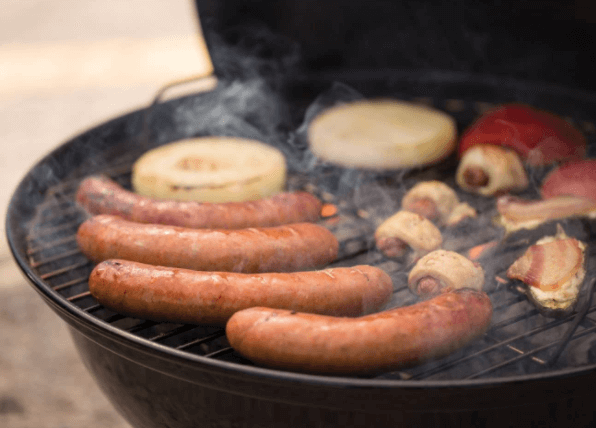
Before we dive into the specifics of the Weber Jumbo Joe vs Go Anywhere, it’s worth taking a moment to talk about the brand that each of these products are made by.
Weber is a name that’s been around for an incredibly long time in the outdoor cooking scene. In 1952, Weber’s founder George Stephen invented the kettle grill – which at the time revolutionized the grilling game.
The Jumbo Joe actually is very similar in many regards to the original kettle design – but is a more modern take with a few improvements.
Weber reinvested their successes back into the company and over time have launched dozens of different grill models across all of the different types of grills. They have a reputation for innovation, and have consistently been at the top in terms of grill popularity and quality for decades.
I own a Weber currently, and can personally attest to the genuine quality and craftsmanship that their grills have to offer. One of the things I love about Weber is that they put their money where their mouth is – they are an industry leader in terms of warranties. All of their products are backed by a limited 10 year warranty, which blows much of the competition out of the water.
Weber Jumbo Joe vs Go Anywhere
Here we’ll take a closer look at the Jumbo Joe and Go Anywhere grills! Afterwords, we’ll highlight the similarities and differences between the two.
Weber Jumbo Joe Review
One of the most attractive features of the Weber Jumbo Joe is its ability to cook incredibly delicious food on the go. It’s made possible by a compact and lightweight design (18 pounds) that’s designed for portability as well as cooking ability.
Even though it’s portable, you don’t necessarily have to sacrifice a ton in terms of cooking surface area. The cooking grate is 18 inches in diameter, which translates to about 254 square inches of cooking area to work with. For reference, that’s enough to comfortably fit about 8 burgers at once.
The lid is the star of the show for the Jumbo Joe. It’s porcelain enameled and won’t ever rust or peel. It does a fantastic job of retaining heat and features a vent that allows you to control your air and smoke flow.
Additionally, the lid lock design actually doubles as a lid holder – so you never have to put the lid on the ground. Obviously, that’s a huge help when it comes to on the go grilling, especially at a campsite or tailgate.
Dampers are part of the ventilation system that allow you to easily control your grill’s temperature. Simply light your coals with a chimney starter, adjust your dampers, and get to cooking!
Last but not least, built in legs and an aluminum ash catcher are underneath the cooking chamber. The legs are sturdy and will support the grill on just about any tabletop surface. When it’s time to clean up, the ash pan is incredibly easy to clear out and wipe down.
Things We Like:
- Classic kettle design is ideal for charcoal grilling
- Lightweight and sturdy
- Lid is incredibly well made. Porcelain enameled and retains heat well
- Steel cooking grate and steel charcoal grate
- Lid lock design holds the lid off of the ground
- Lid handle with heat shield
- Ash management system
- Covered by a 10 year warranty
Things We Don’t:
- Would like to see a higher quality material used for the handle
Weber Go-Anywhere Charcoal Grill
The Weber Go Anywhere Charcoal Grill is another portable unit that’s well suited for on the go charcoal grilling.
Instead of a kettle shape, this one features a rectangular prism like cooking chamber. The stainless steel grate is 16 inches by 10 inches for a total of 160 square inches of cooking surface area. That’s enough space for up to 6 burgers at a time.
As the name suggests, the Go Anywhere is designed to be lightweight and portable so that you can, well… go anywhere with it. The lid locks easily for portability and the unit weighs about 15 pounds all in.
Weber includes their signature porcelain enameled lid and base on this grill which does a fantastic job of retaining heat during your cook. It also is designed to withstand the test of time and won’t rust or peel – even if it’s exposed to the elements.
Things We Like:
- Weighs under 15 pounds
- Porcelain enameled lid and base
- Stainless steel cooking grates
- Lid locks for easy transportation and storage
- No ash pan but it’s very easy to clean out ashes from the unit itself
- Entry level price point for a quality grill
- 10 year warranty
Things We Don’t:
- Only 160 square inches of cooking surface area (might work for you though depending on what your needs are)
- Charcoal basket isn’t super deep so at times it can be tough to create a robust fire (if it’s windy out, for example)
Weber Jumbo Joe vs Go Anywhere – Similarities & Differences
Now that we’ve had a closer look at each grill, let’s take a step back and revisit what the similarities and differences are of these two grills.
Similarities
- Each grill is a portable grill, and uses charcoal as its fuel source. Charcoal as a fuel source gives you the opportunity to impart delicious smokey flavors onto your food.
- Both of these grills are very cost efficient, and great choices especially if you’re on a budget for a new grill. The Go Anywhere is a little cheaper than the Jumbo Joe, but both are close to one another in price and on the very low end of the price spectrum in terms of quality grills.
- Both are table top grills – in other words they’re designed to not only be portable but also to stand on their own on a flat surface.
- Each grill has stainless steel cooking grates (which is a great thing) and has a porcelain enameled lid/body just like all other Weber grills.
- Both of these units have a locking lid mechanism and a safe touch handle.
- A 10 year limited warranty covers both of these grills.
Differences
- The Jumbo Joe is a kettle grill (circular) and the Go Anywhere is rectangular.
- Size wise, the Jumbo Joe has 254 square inches of cooking surface area and the Go Anywhere has 160.
- The Jumbo Joe weighs 18 pounds and the Go Anywhere weighs 15.
- Jumbo Joe has a built in ash pan and the Go Anywhere does not.
- The Jumbo Joe has a deeper and more spacious charcoal pan
Final Thoughts
I hope this comparison of the Weber Jumbo Joe vs Go Anywhere has helped to clear up the air about which might be the best fit for you! At the end of the day, these are both great grills that are well suited for on the go charcoal grilling.
Whether you plan to take it to the camp site, to a tailgate, or to another outdoor adventure, you really can’t go wrong with either.
Which one did you end up with? We’d love to hear about it in the comments section below!
The post Weber Jumbo Joe vs Go Anywhere – Comparing Two of Weber’s Best Portable Charcoal Grills appeared first on Own The Grill.
]]>The post Why Won’t My Charcoal Grill Get Hot? 8 Most Common Reasons Why appeared first on Own The Grill.
]]>While charcoal grilling is a simple concept, that doesn’t mean it’s always smooth sailing. Sometimes the fuel may not be cooperating how you’d like it to, leaving you asking the question: why won’t my charcoal get hot?
In this article, we’ve compiled the top answers to your question of “why won’t my charcoal grill get hot”? We’ve also made a checklist of things to look out for the next time you fire up the grill to ensure that your food gets the proper amount of heat.
Why Won’t My Charcoal Grill Get Hot? Top Reasons
Here are the most common reasons that you might not be able to get your coals up to temperature:
- Your grill isn’t clean
- Your charcoals are low quality
- Your dampers aren’t open
Your Grill Isn’t Clean
Improper clean up can become an issue for your grill and prevent you from achieving the sort of results you want on future cooks. Specifically with charcoal grills, the issue comes when you don’t thoroughly clean ash out of your grill after use.
You should clean your grill’s grates and remove ash after every single time you cook – it takes less than 5 minutes and will greatly increase your cooker’s performance over time.
Ash in your cooking chamber will clog your ventilation system and make it almost impossible for your charcoal to stay lit. A clean grill means proper flow of air, which in turn allows for you to create a strong fire to cook over.
Charcoal Quality
Purchasing a quality bag of charcoal can make all of the difference. No matter whether you’re using lump charcoal or briquettes, properly made charcoal can make all of the difference. Cost slashing, corner cutting brands will tend to make a charcoal that’s hard to light, difficult to keep lit, and less consistent than stronger brands.
On a similar note, poorly made charcoal tends to ash quite a bit. As you’ve now learned, lots of ash only makes your work more difficult and leads to more clean up. Higher quality charcoal will produce far less ash and burn more consistently.
Are Your Dampers Open?
The answer to why won’t my charcoal grill get hot might be a simple one. Most charcoal grills are designed with dampers on the bottom of the grill and on the top lid. These dampers are there to help you control airflow through your cooker.
When you’re preheating a charcoal grill, it’s crucial to keep your dampers wide open. This way, maximum oxygen can be fed to the coals while they ignite and heat up into a fire. If your grill won’t get hot initially, make sure the dampers are open wide.
Other Reasons Your Charcoal Grill Might Not Be Getting Hot
Here are a few more less likely but still possible reasons that you could be having trouble getting your cooker up to temperature:
You Aren’t Lighting Your Coals the Right Way
Nowadays, there really isn’t a great excuse for not having a charcoal chimney starter. These contraptions typically cost less than 20 bucks and make lighting your coals extremely easy.
All you do is load the coals up, use a little bit of paper at the bottom of the starter to ignite a flame, then sit back for about 15 minutes as your coals ignite and the fire works it’s way vertically through the cylinder.
If you aren’t using a charcoal chimney starter, you could simply be going about starting your fire the wrong way. Nowadays it’s not advised to use lighter fluid or other chemicals to get your fire going. You just don’t want that stuff near anything that is going to cook your food.
The other alternative is to use an electric charcoal starter, which are a little bit more dangerous to use but can definitely still get the job done.
Your Thermometer Doesn’t Work
One of the consistently inconsistent pieces of equipment across all types of grills is the built-in lid thermometer. For some reason, many manufacturers just don’t get it right, or they view the lid thermometer as a cost saving opportunity in the construction process.
Unfortunately, that means that many grills have lid thermometers that stink, for lack of a better term. So it’s quite possible that your fire is burning plenty hot, but you’re just getting a bad reading from your thermometer.
The solution is to get a third party thermometer and compare that reading with the reading of your lid temperature gauge.
Damp, Old, or Reused Charcoal
You could have purchased quality charcoal but as charcoal ages, it loses its ability to ignite quickly and burn consistently. The same goes for charcoal that might have gotten damp or if you’re trying to reuse charcoal from a previous cook.
Your best bet is to use fresh charcoal that has been opened within a couple of weeks. You can also extend the life of your charcoal by storing it in an airtight container and placing it in a dark room in between cooks.
Altitude
If you happen to live in an area around 5,000 or more feet above sea level and consistently grill at high altitude, you might naturally have trouble getting your fire started even if you’re doing everything right. The atmosphere begins to lose oxygen at these heights, so it becomes an uphill battle to get your fire lit and burning strong.
Unfortunately there isn’t a silver bullet to building a charcoal fire in the altitude. The best advice we can give is to make sure your dampers are all the way open and your grill is extra clean to ensure maximum air flow for the fire.
Your Grill Is Low Quality
The unfortunate reality is that some manufacturers, especially those of cheap charcoal grills, cut corners in the design department. If your grill is poorly designed or made with inferior materials, you may have trouble getting it up to temperature.
If you’re on a budget but want a replacement grill that’s well made, head on over to our list of the best charcoal grills under $200 next.
Final Thoughts
If you came into this article asking why won’t my charcoal grill get hot?, hopefully one of these solutions helps to get you well on your way to a hot grill! Most of the time, proper grill care, cleaning, and using your ventilation system properly will get the job done.
If you need some tips on how to put out the charcoal safely after you’ve gotten it nice and hot, check out our guide on that topic right here.
Still having trouble getting your charcoal grill hot? Let us know about it in the comments section below and we’ll do our best to help out!
The post Why Won’t My Charcoal Grill Get Hot? 8 Most Common Reasons Why appeared first on Own The Grill.
]]>